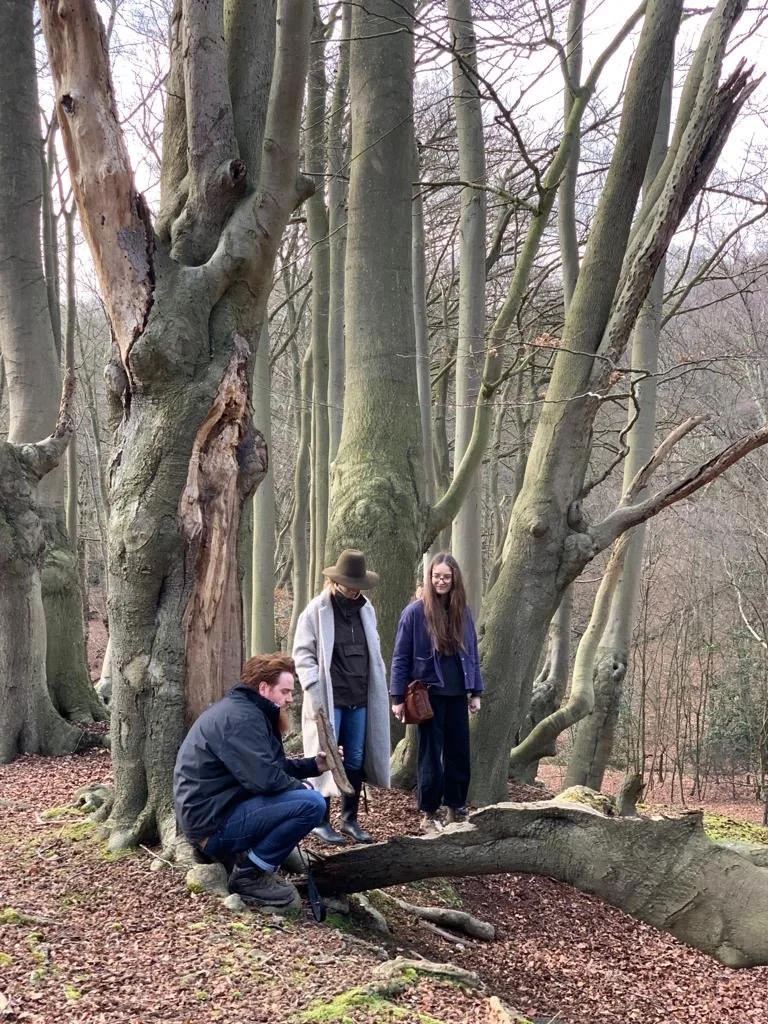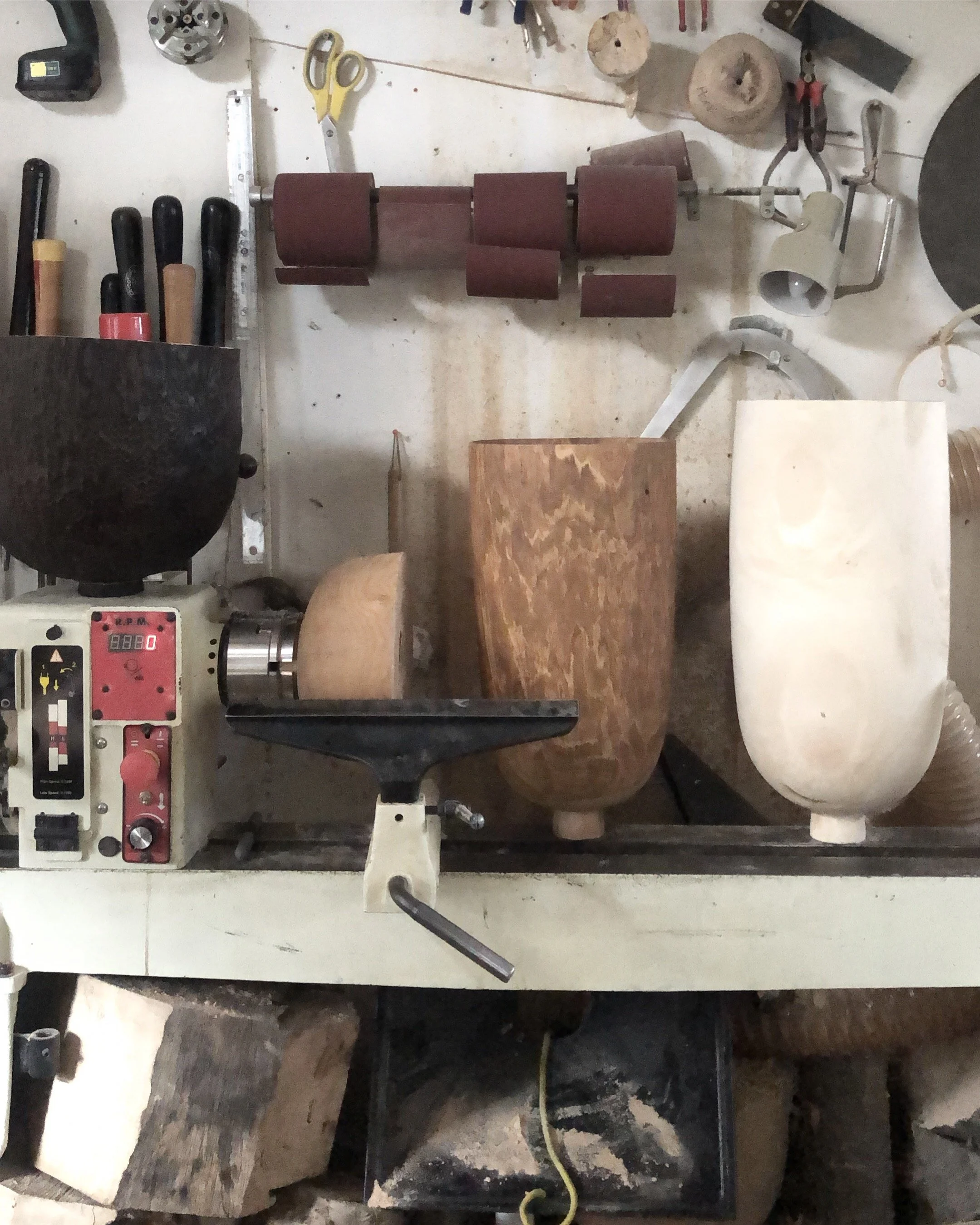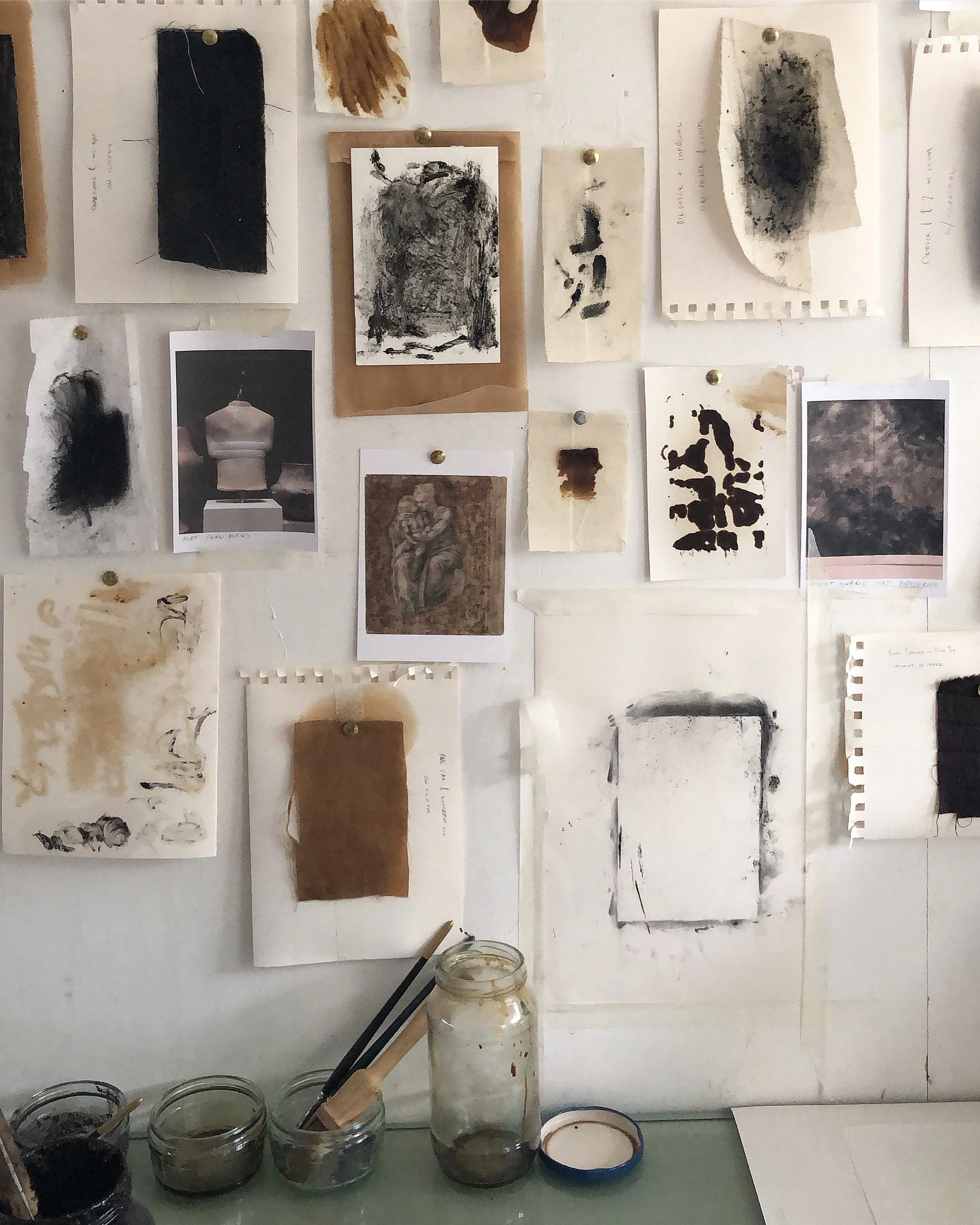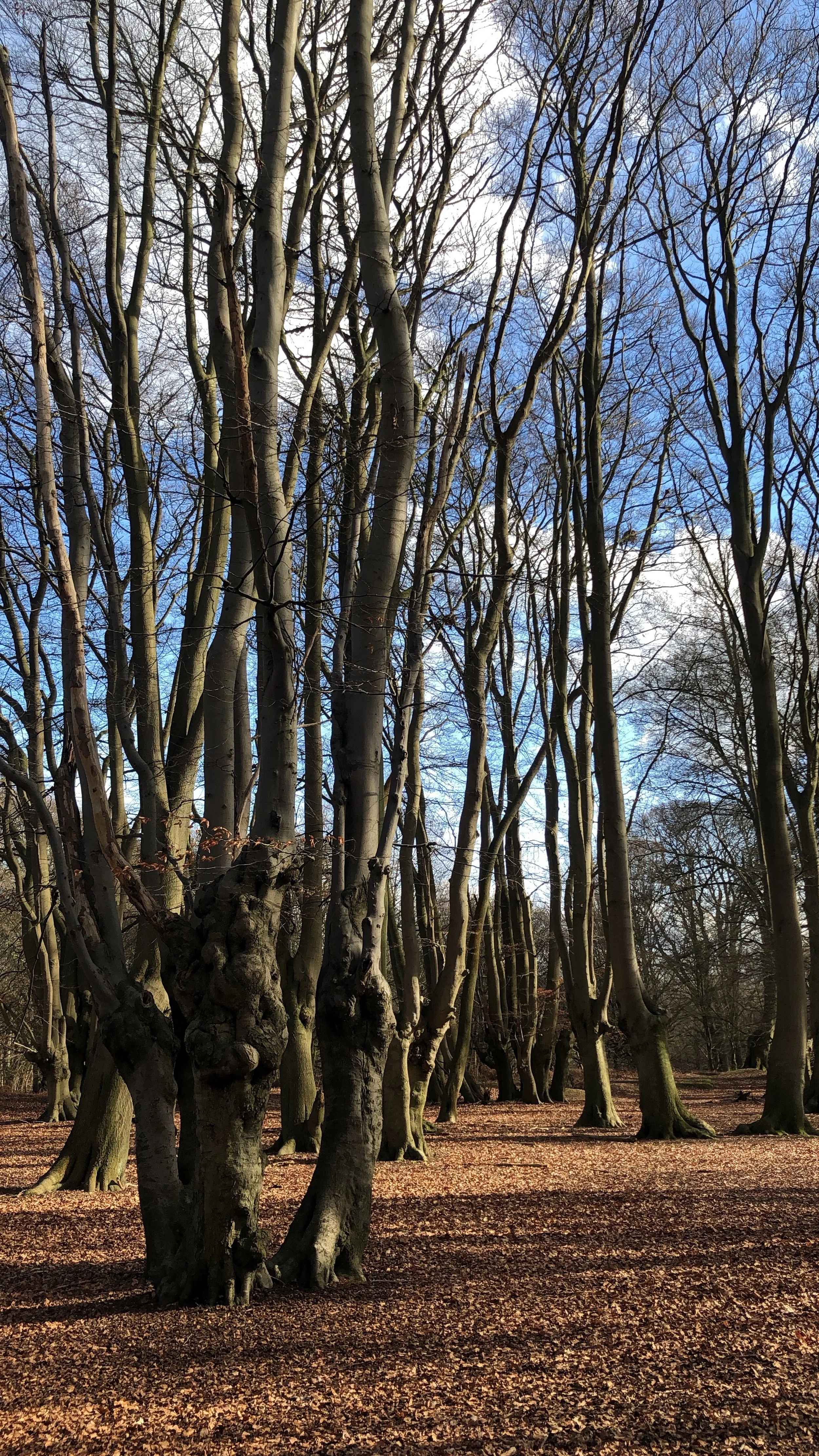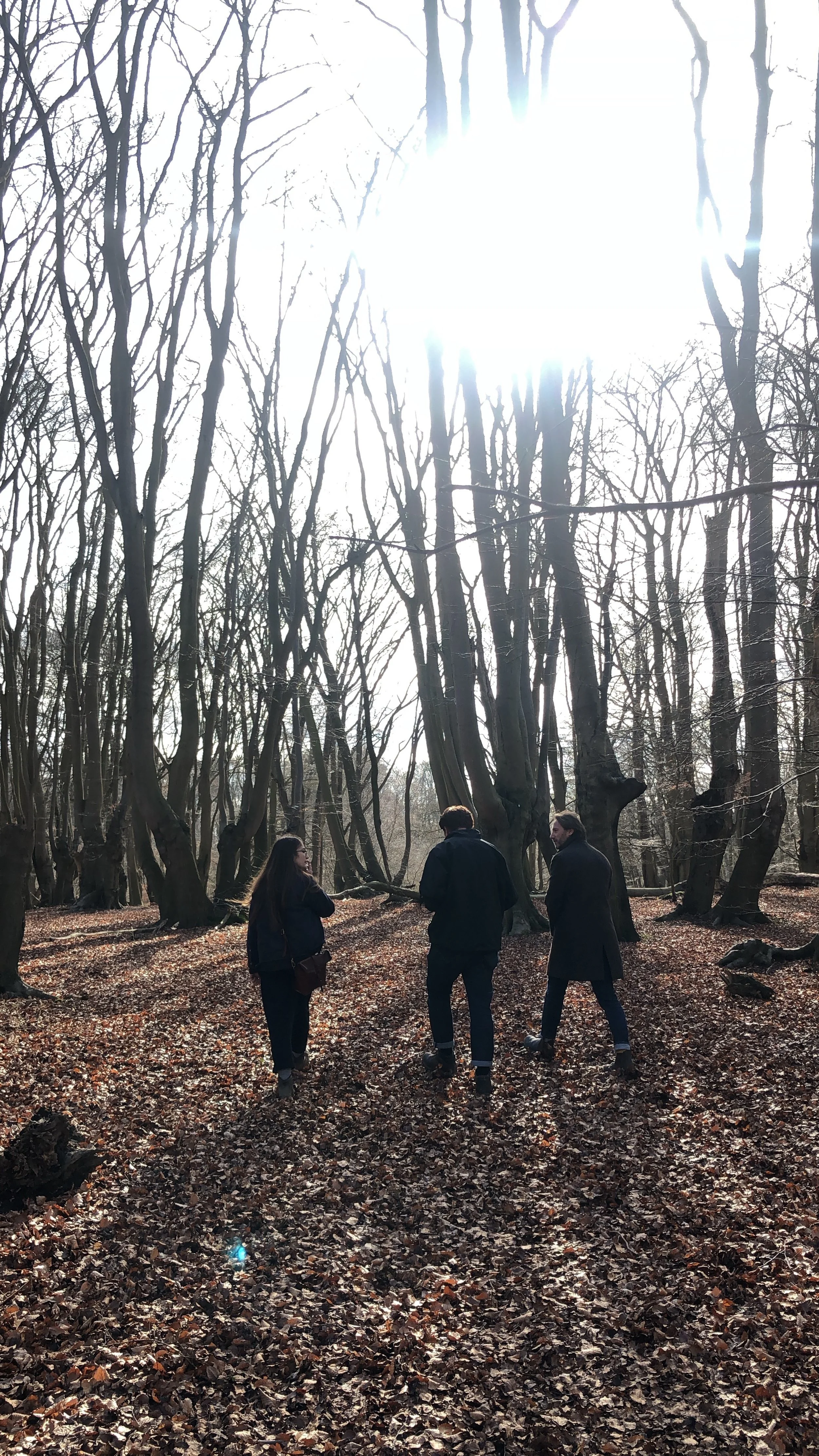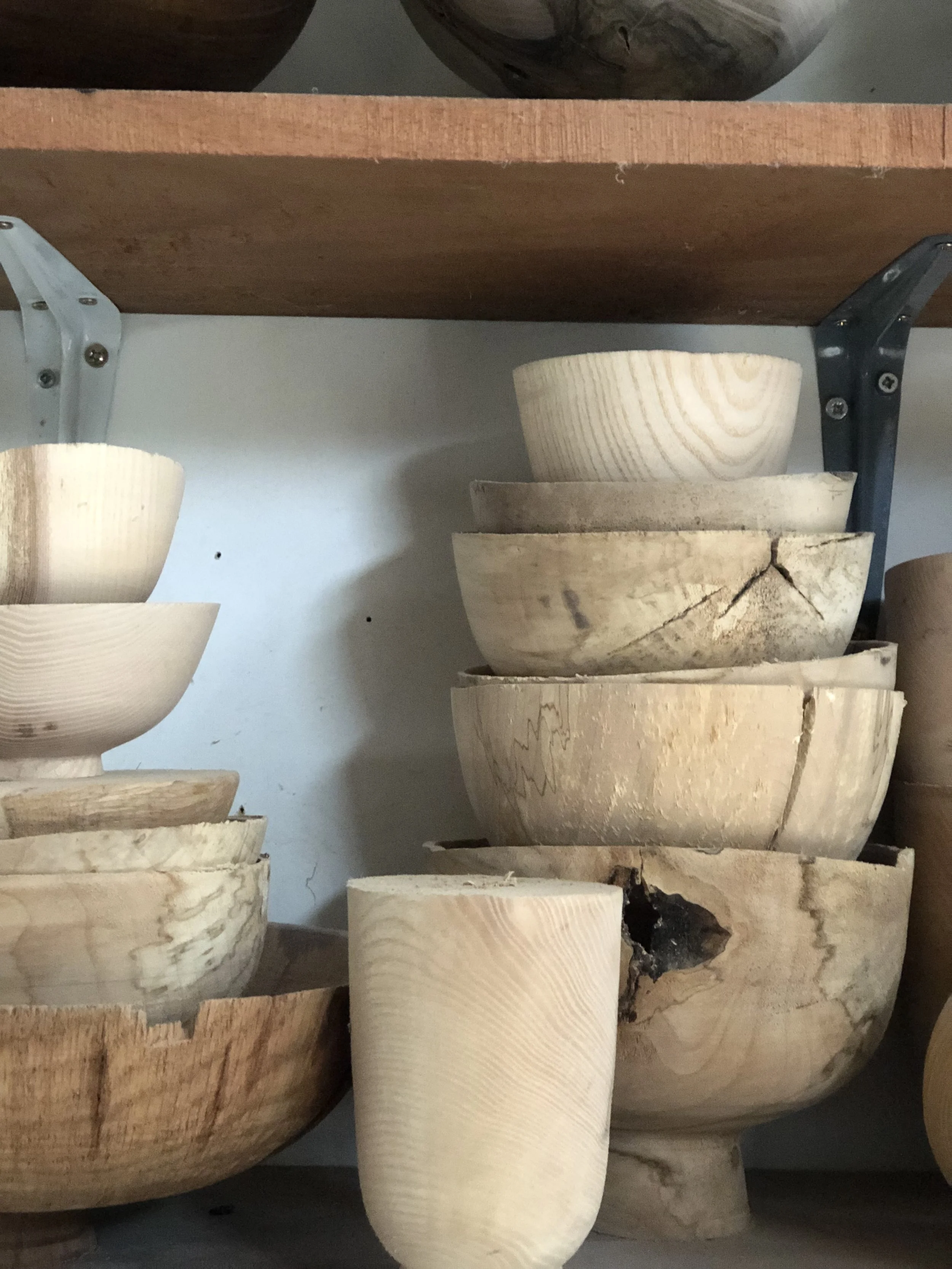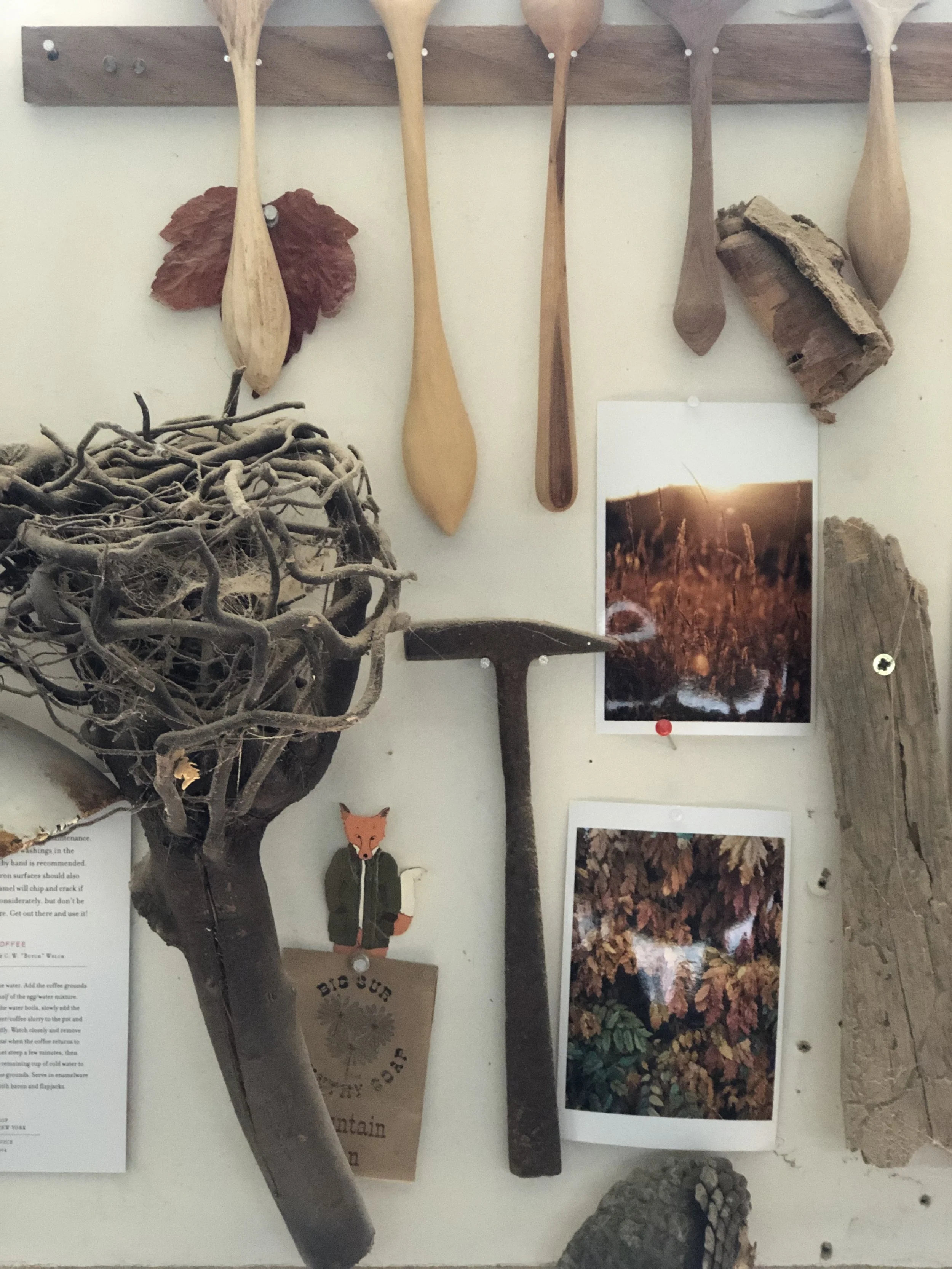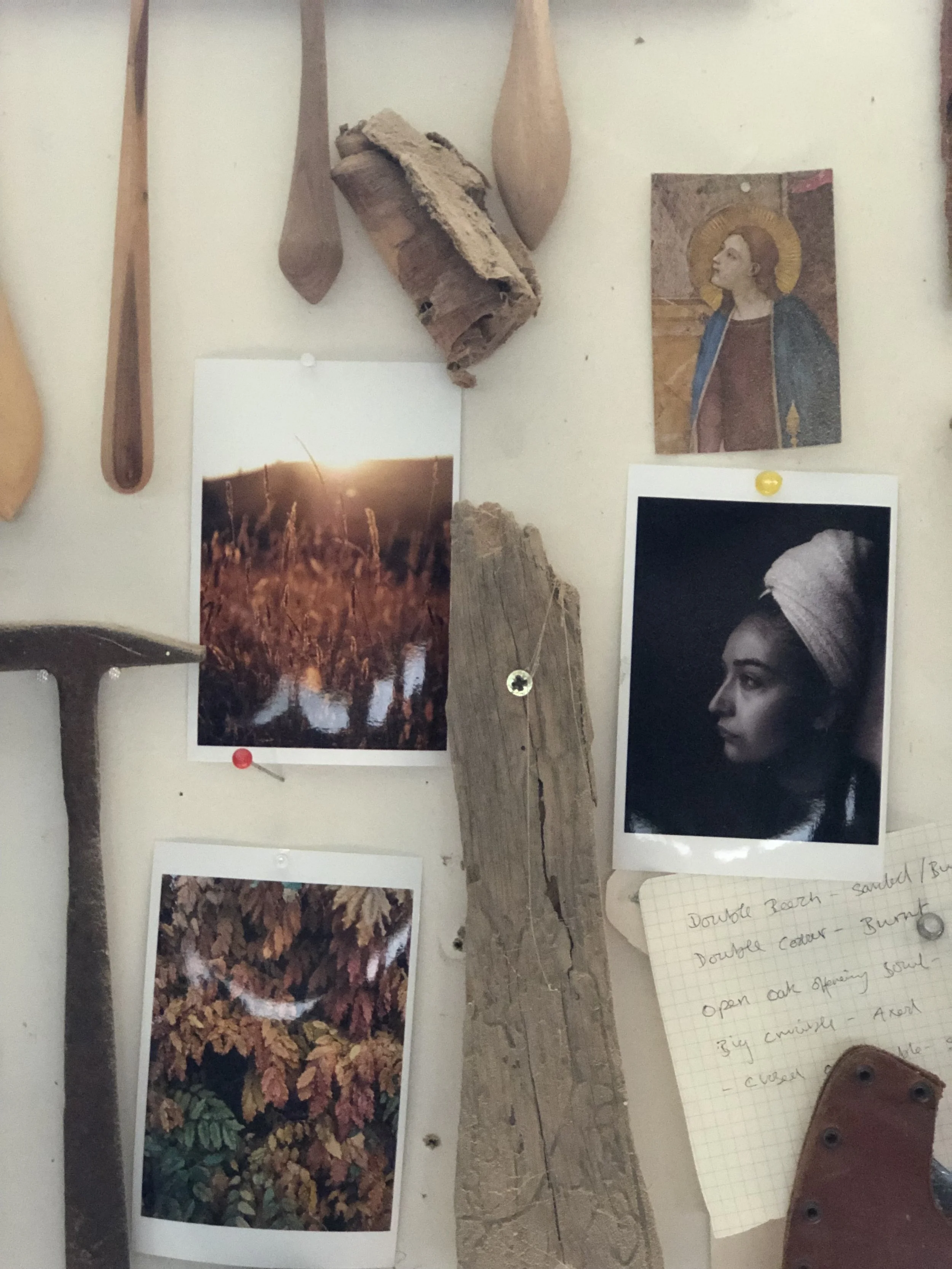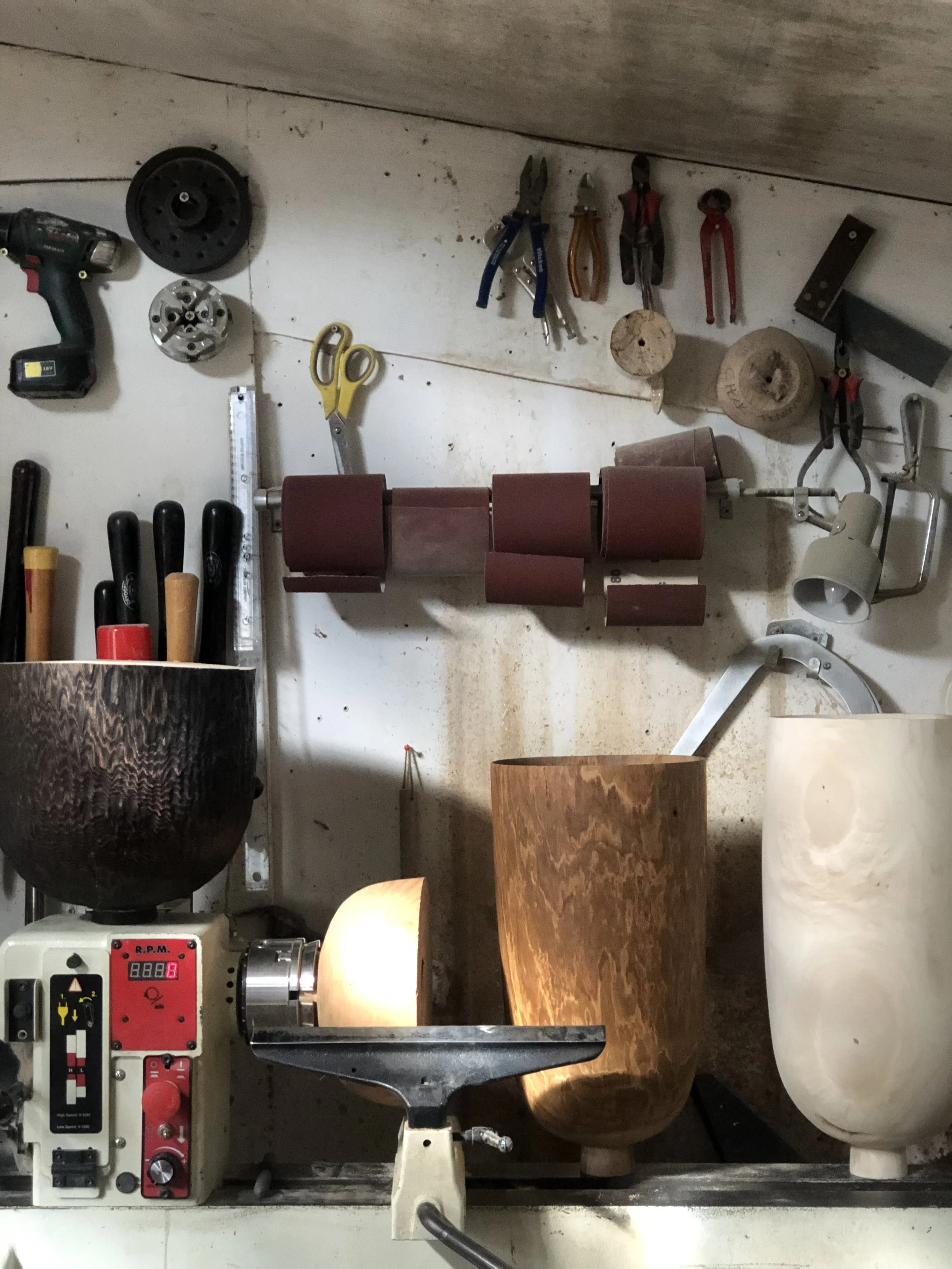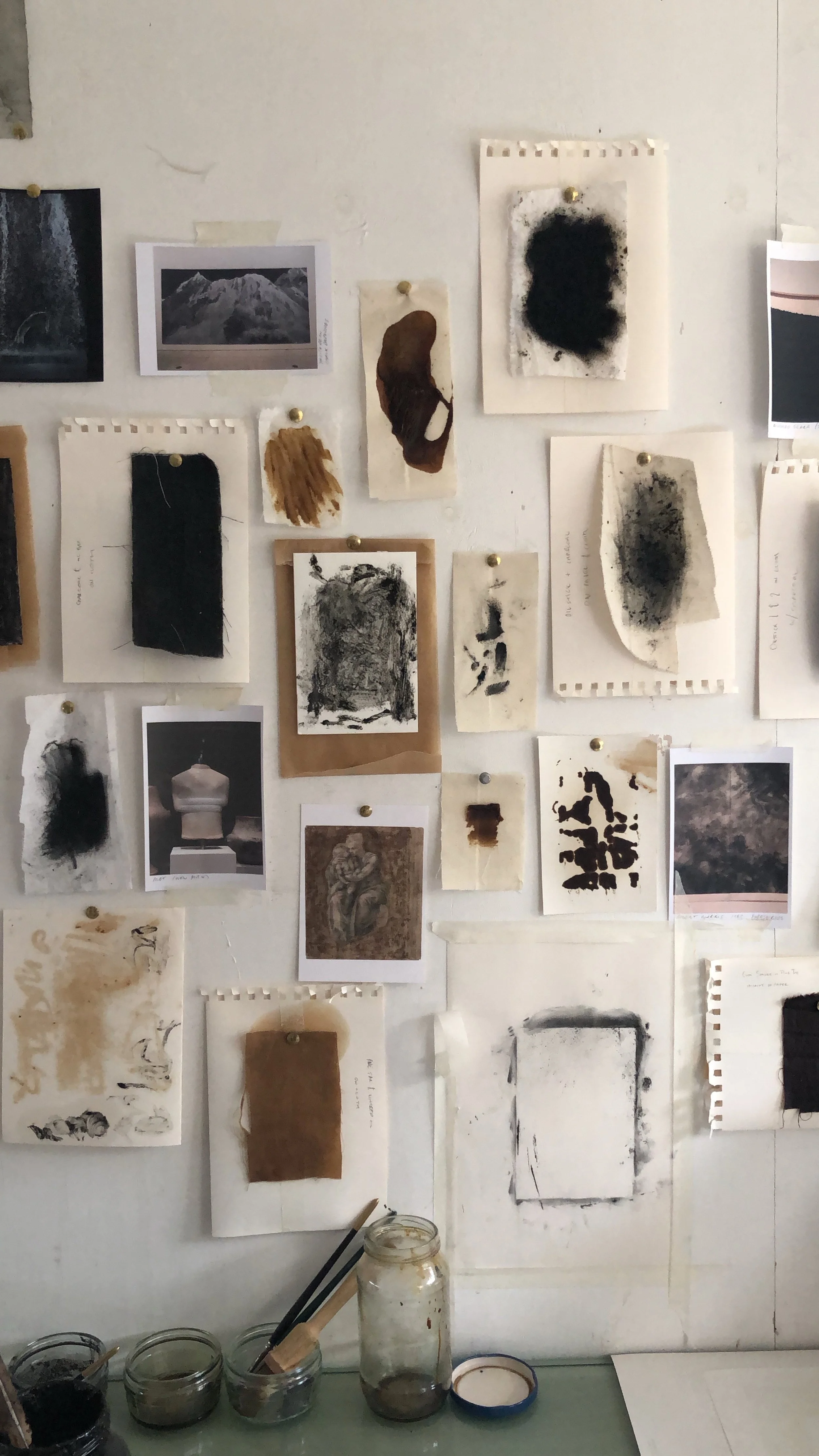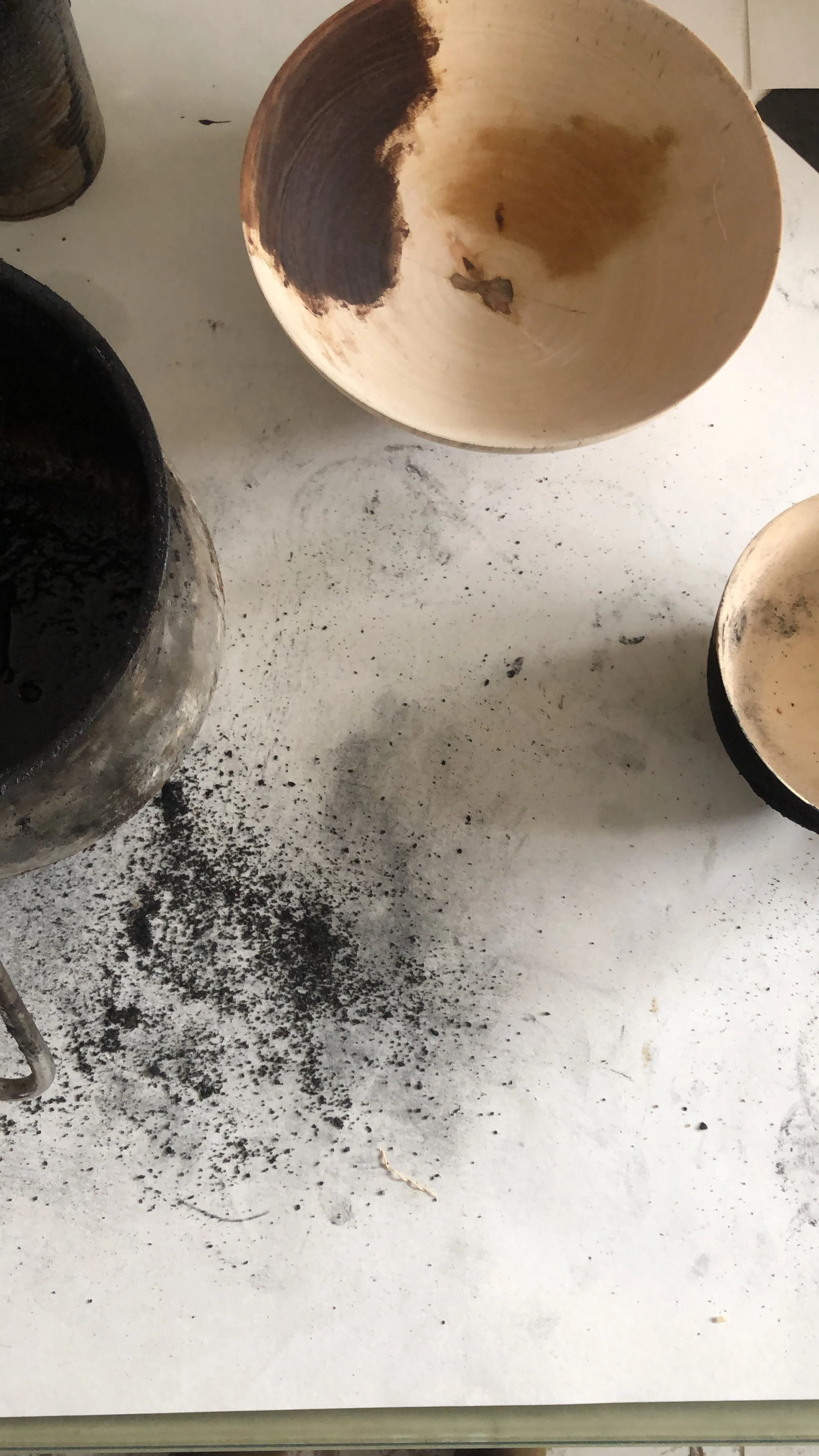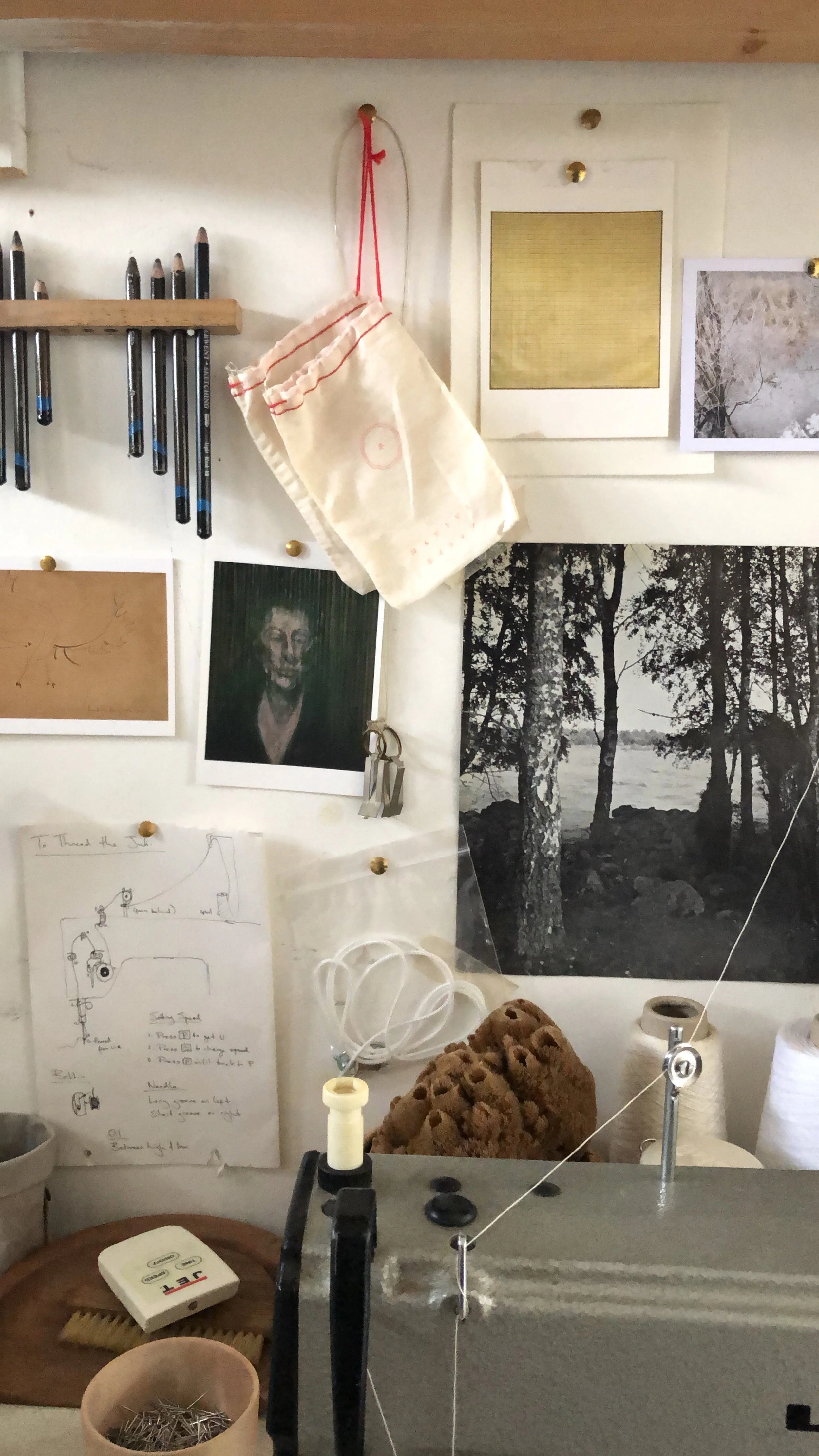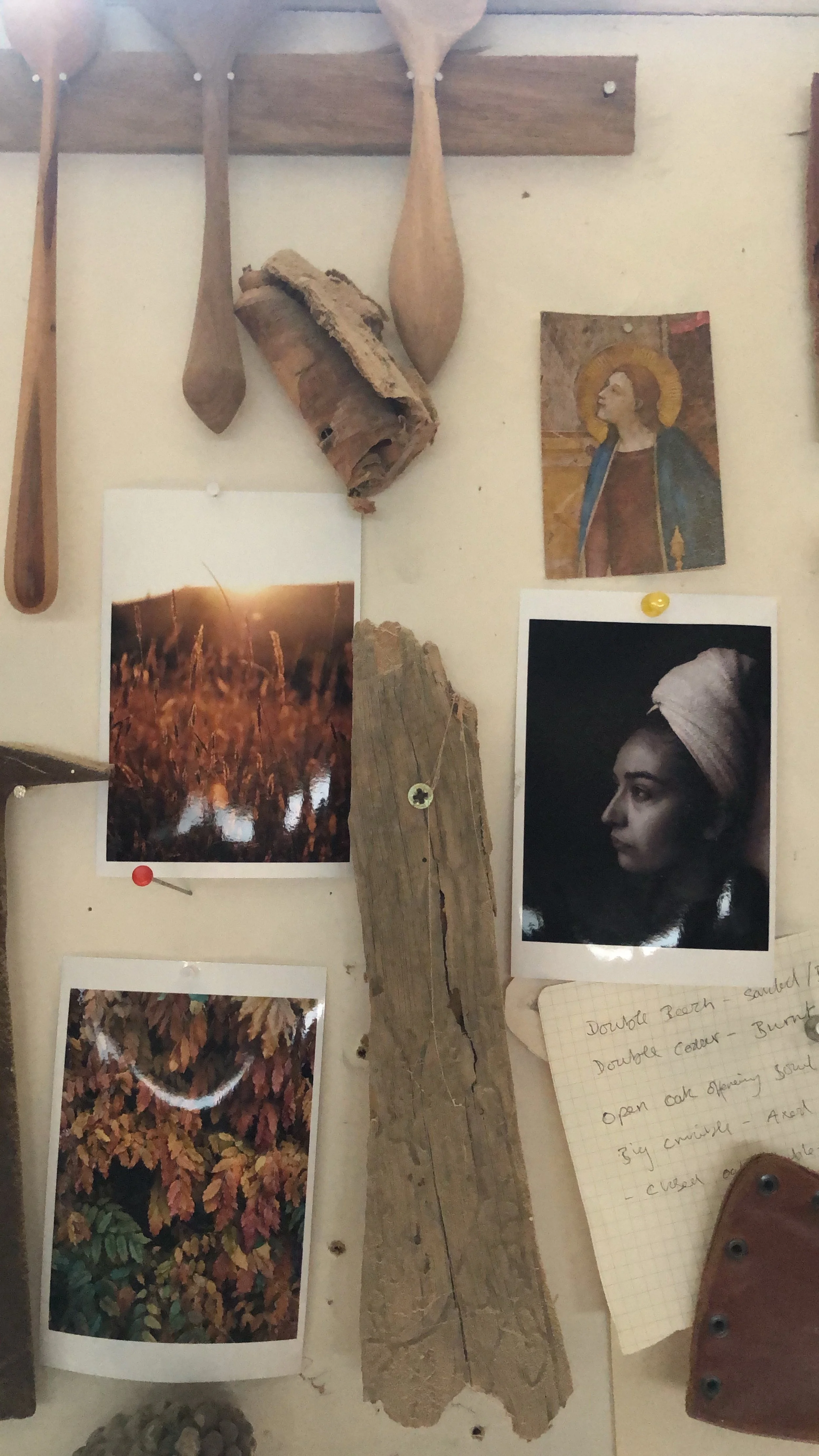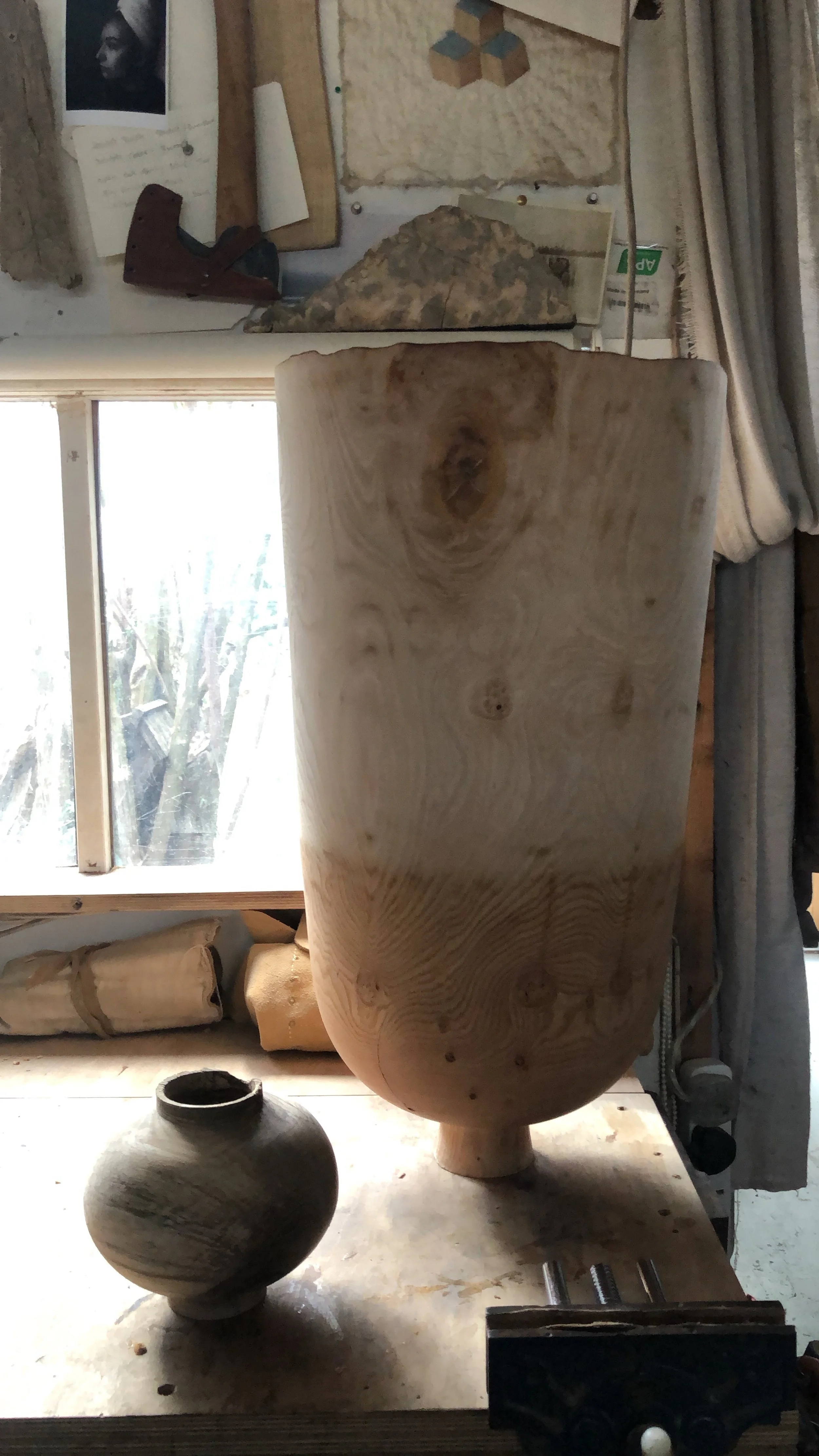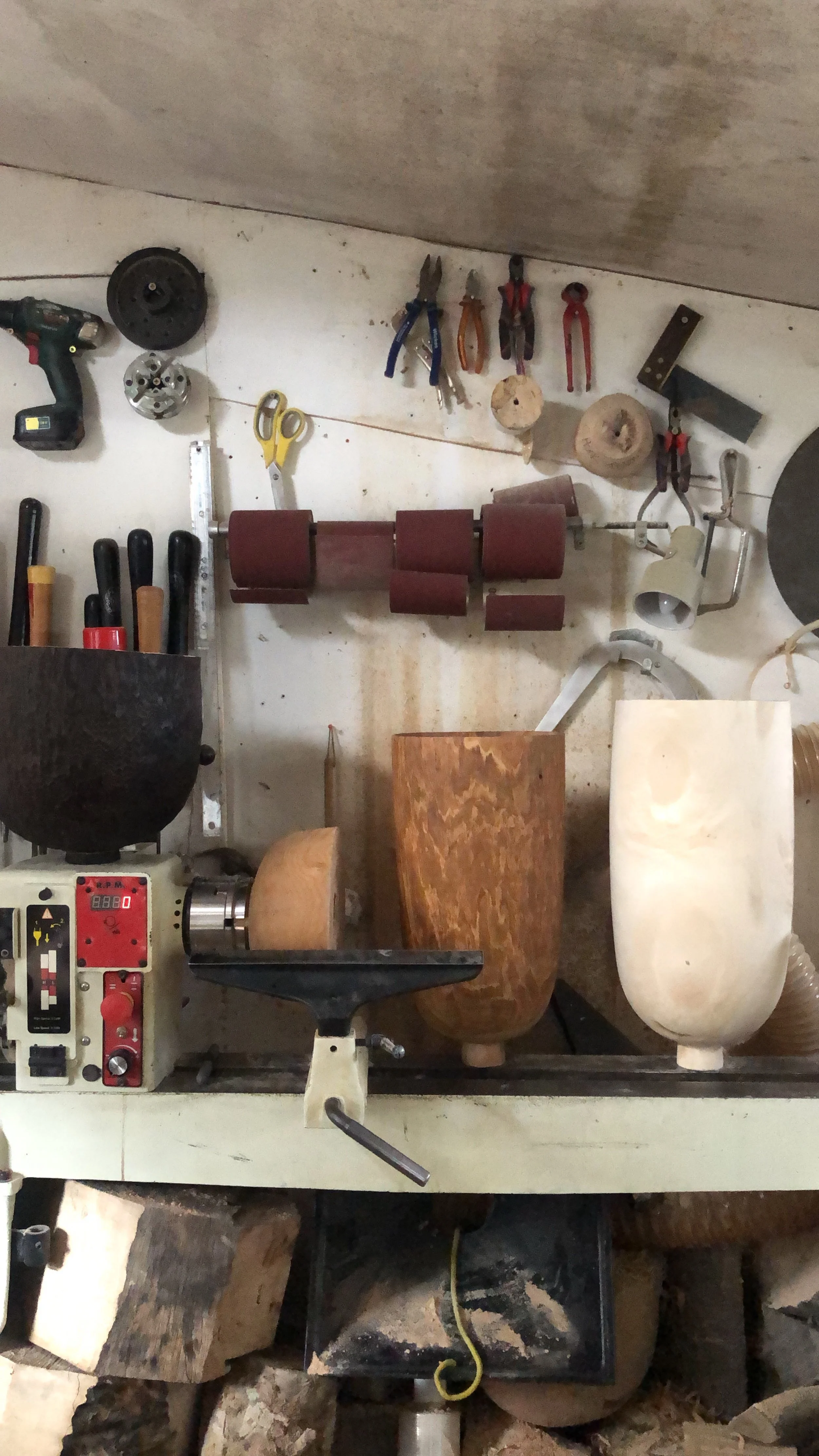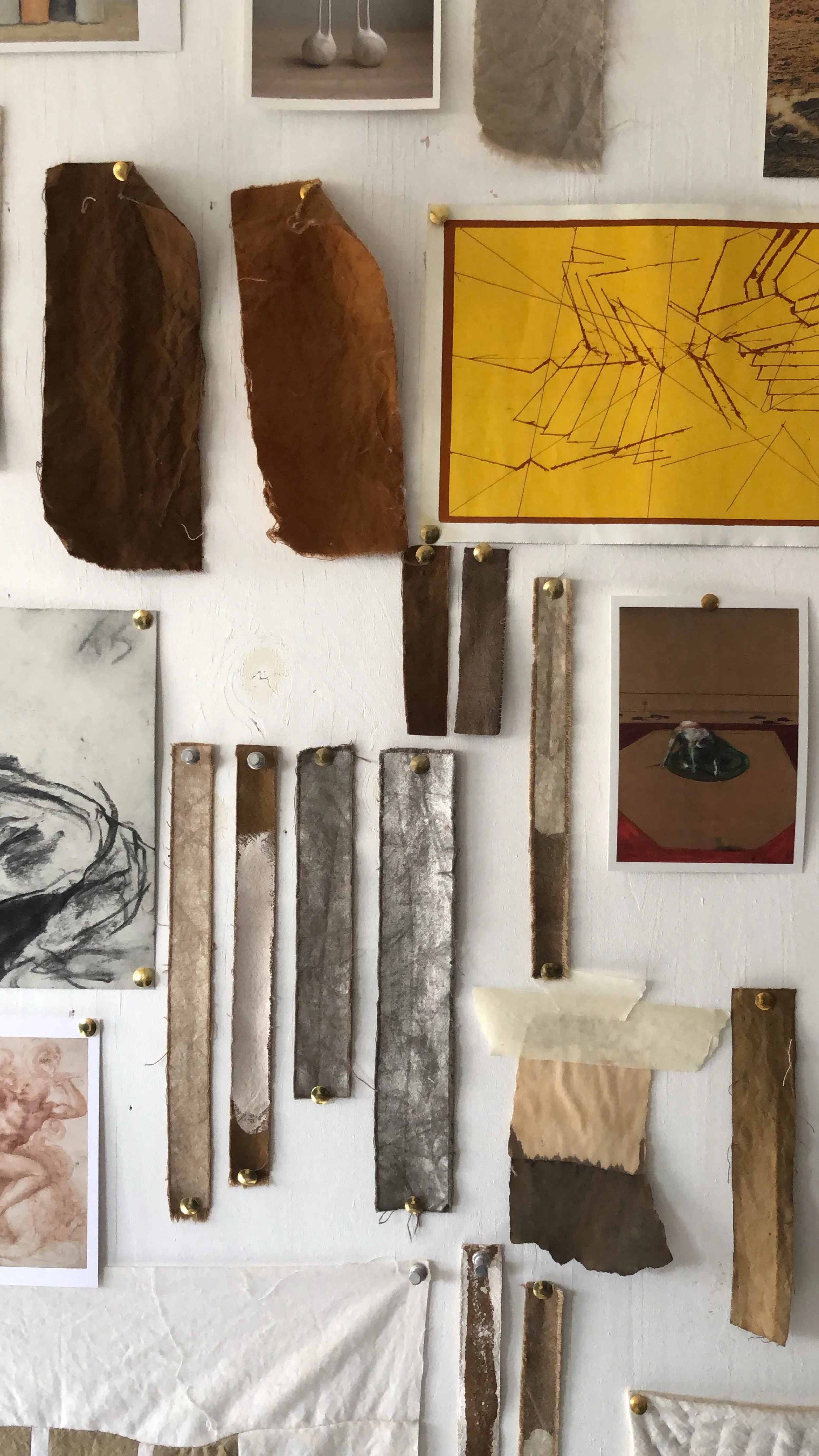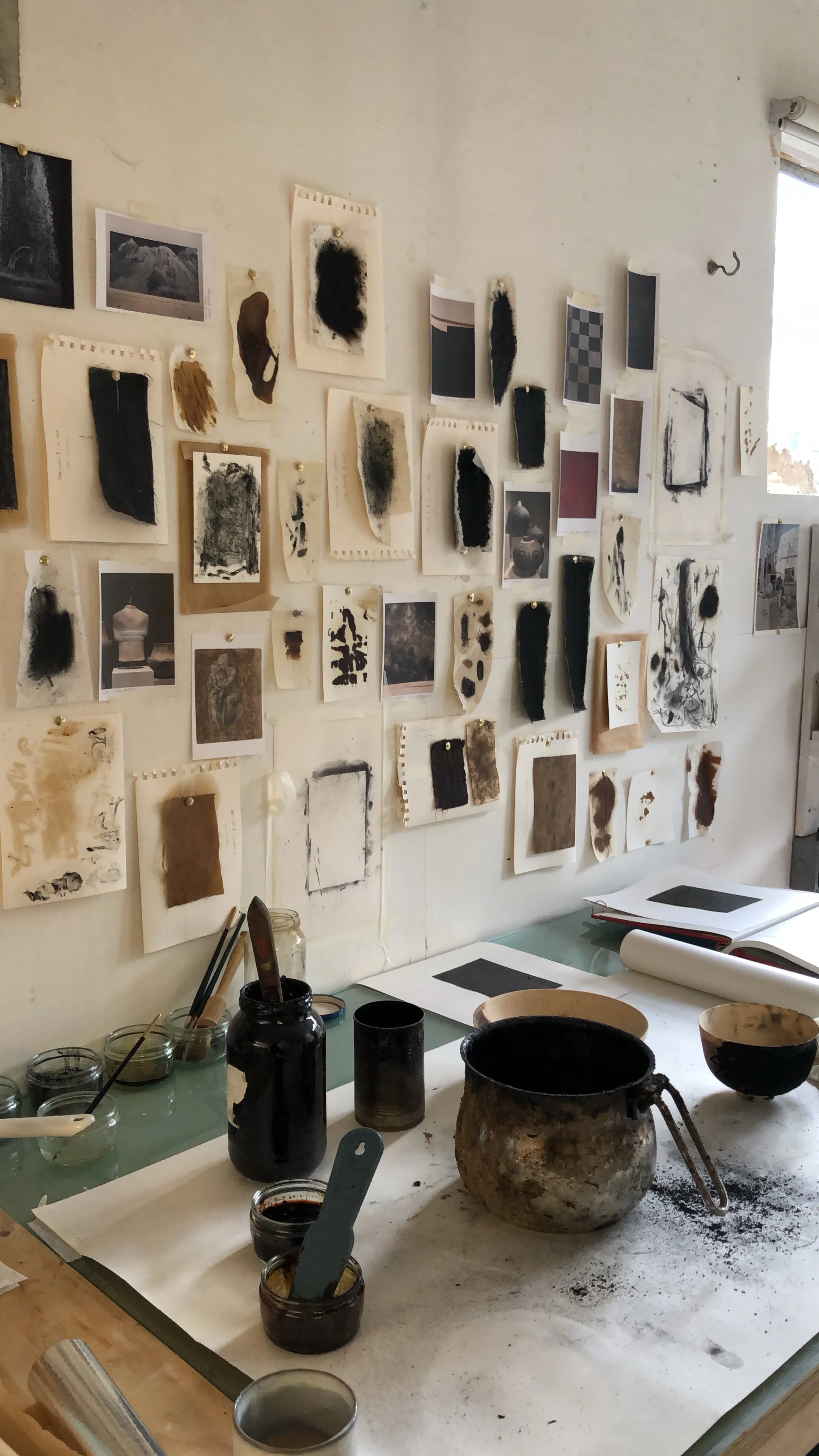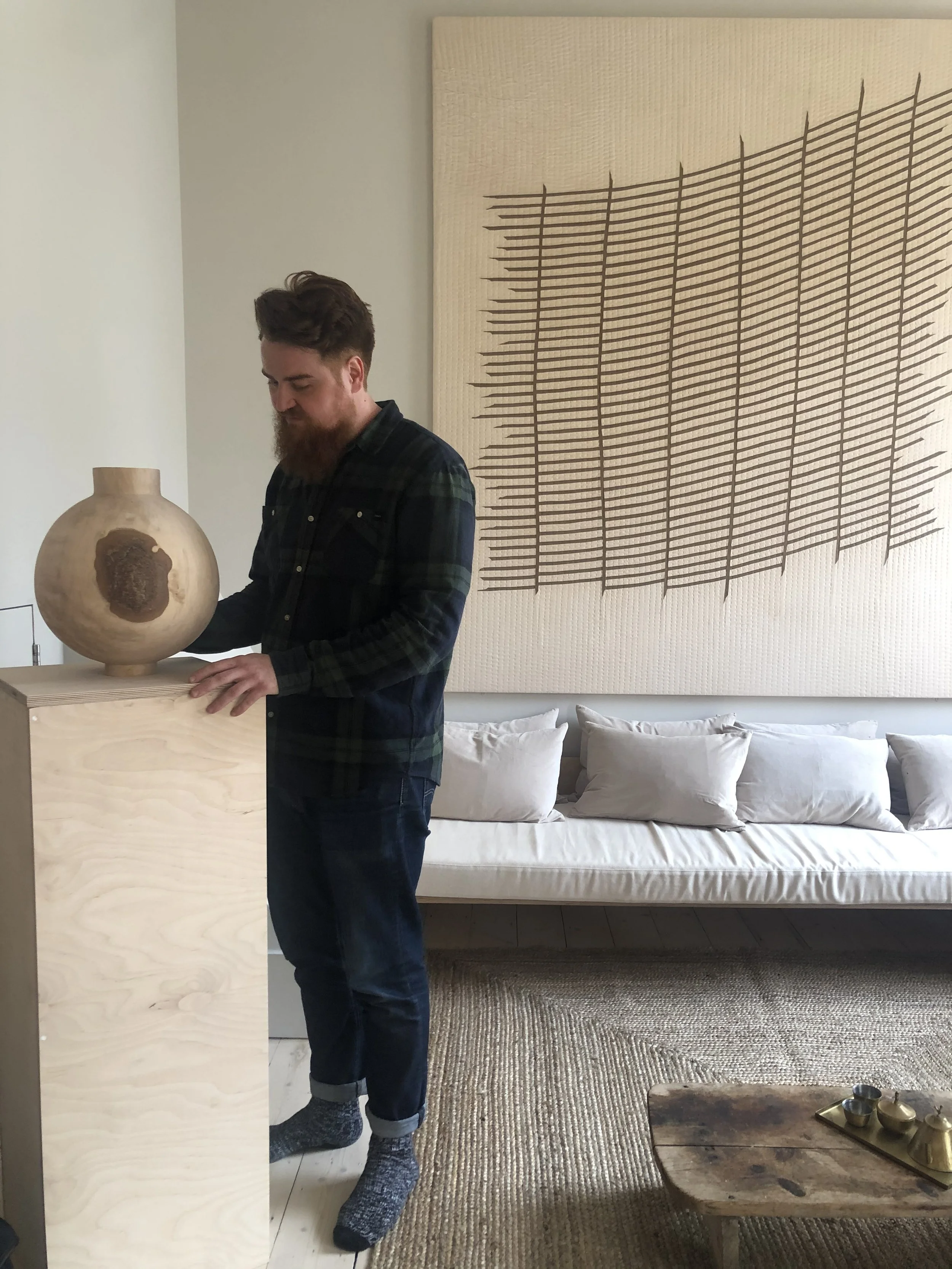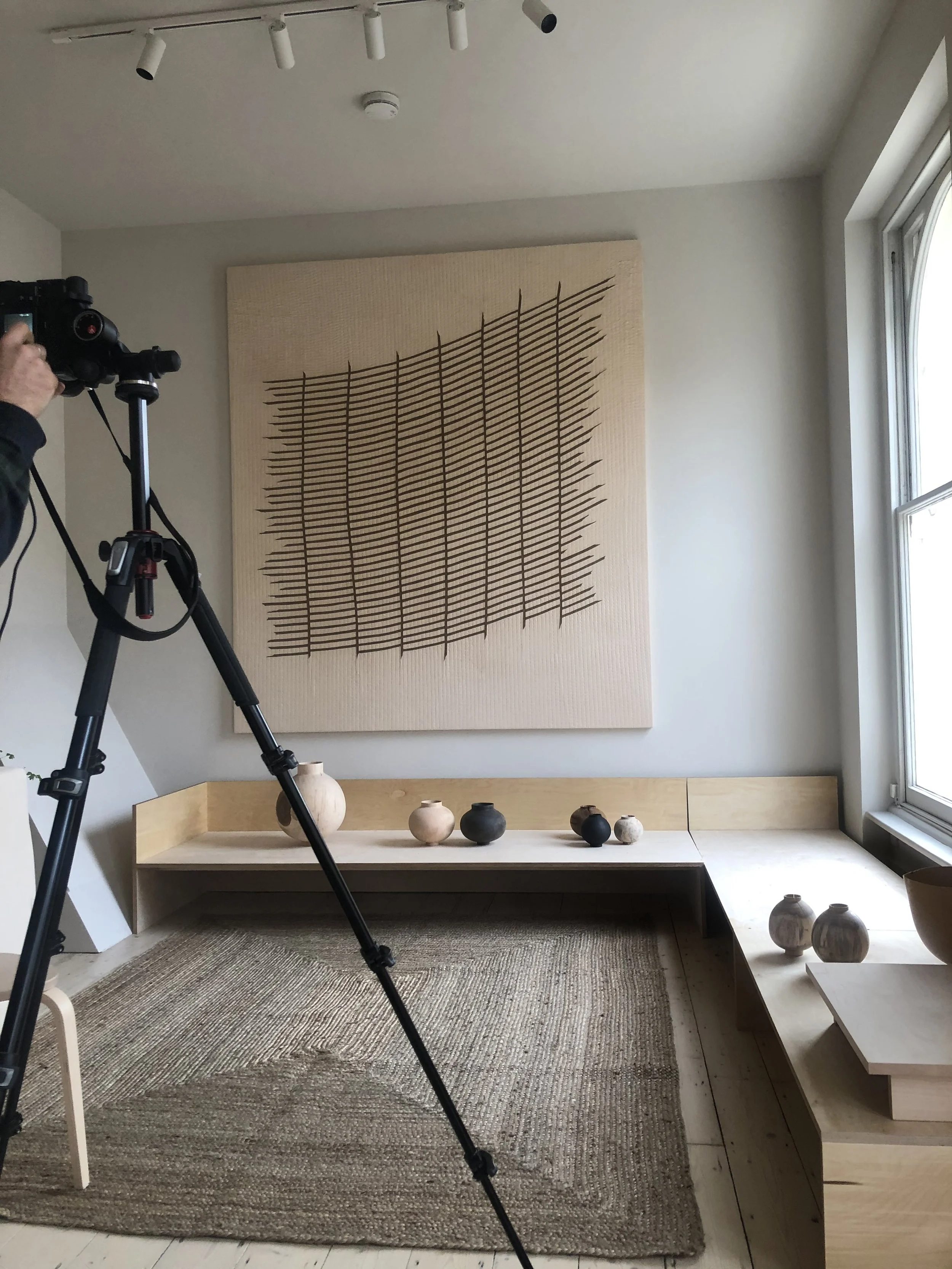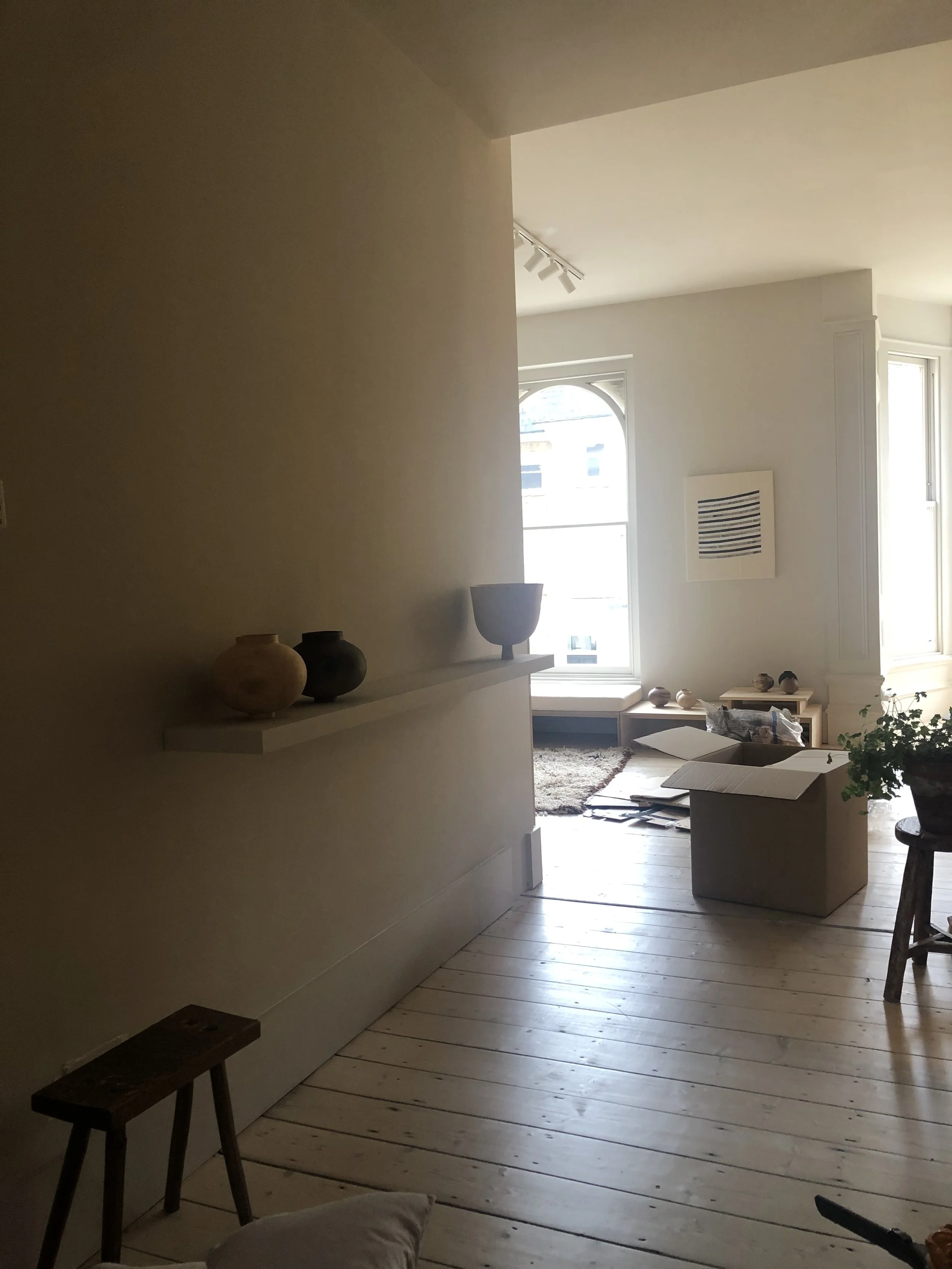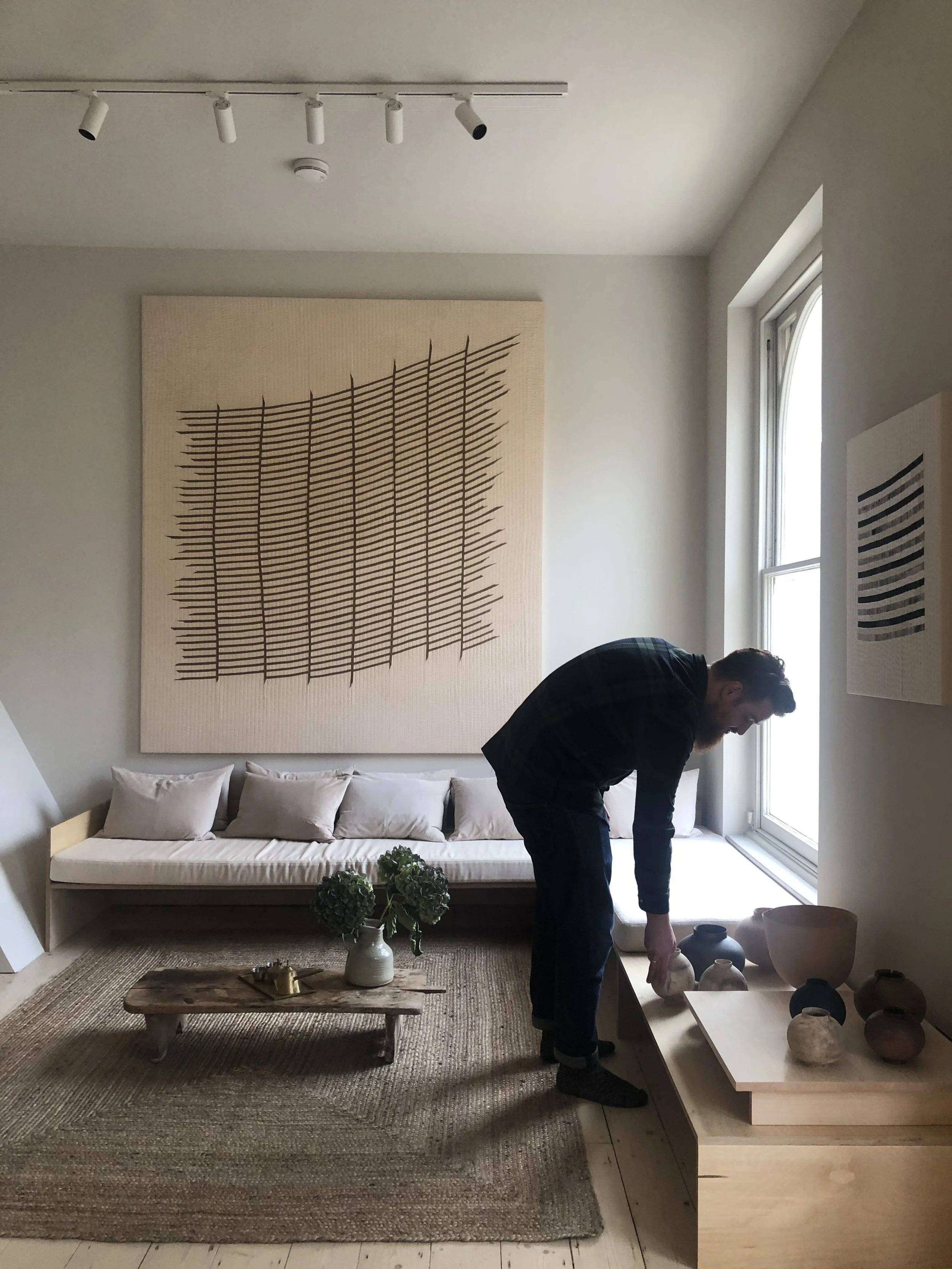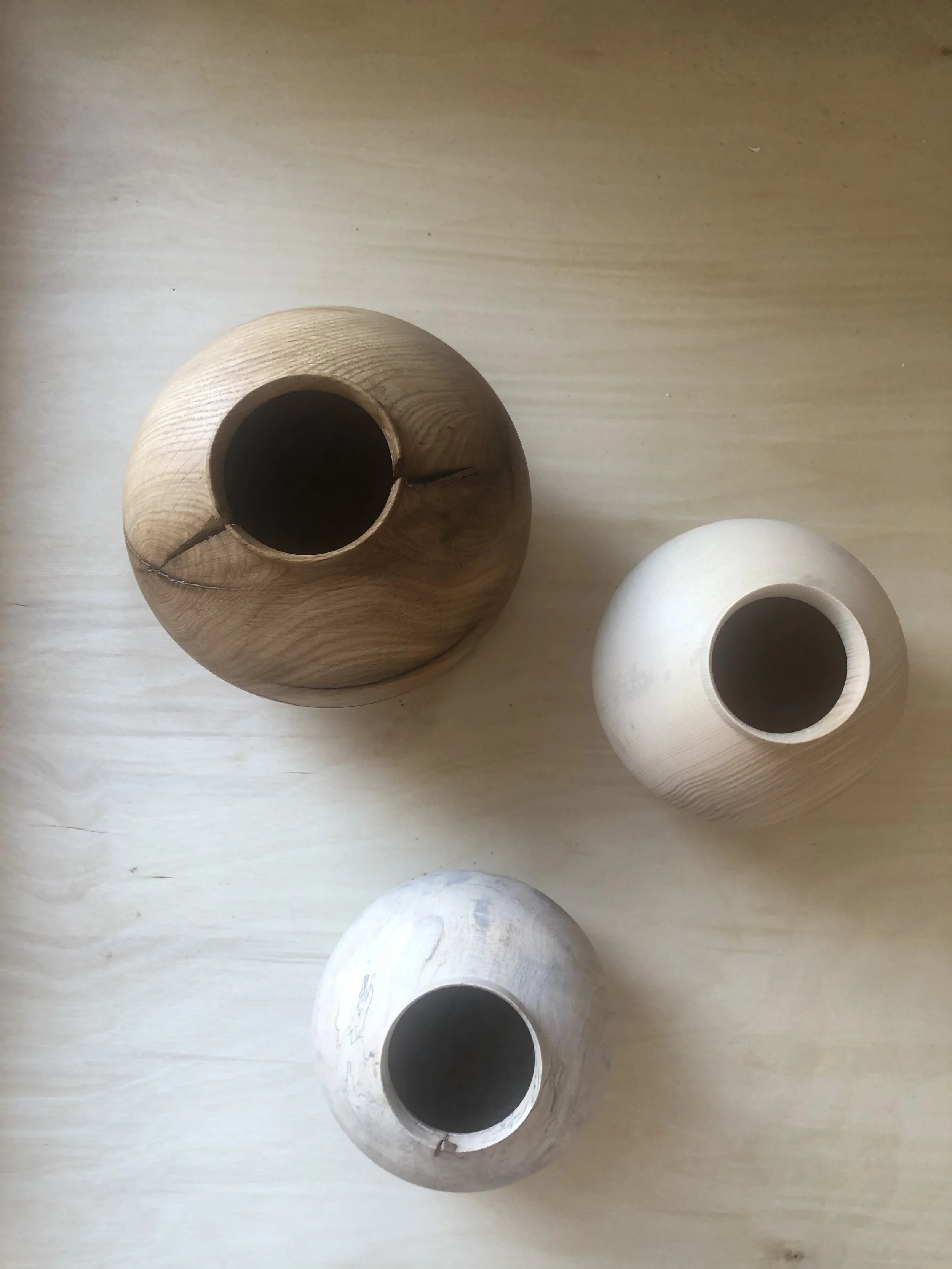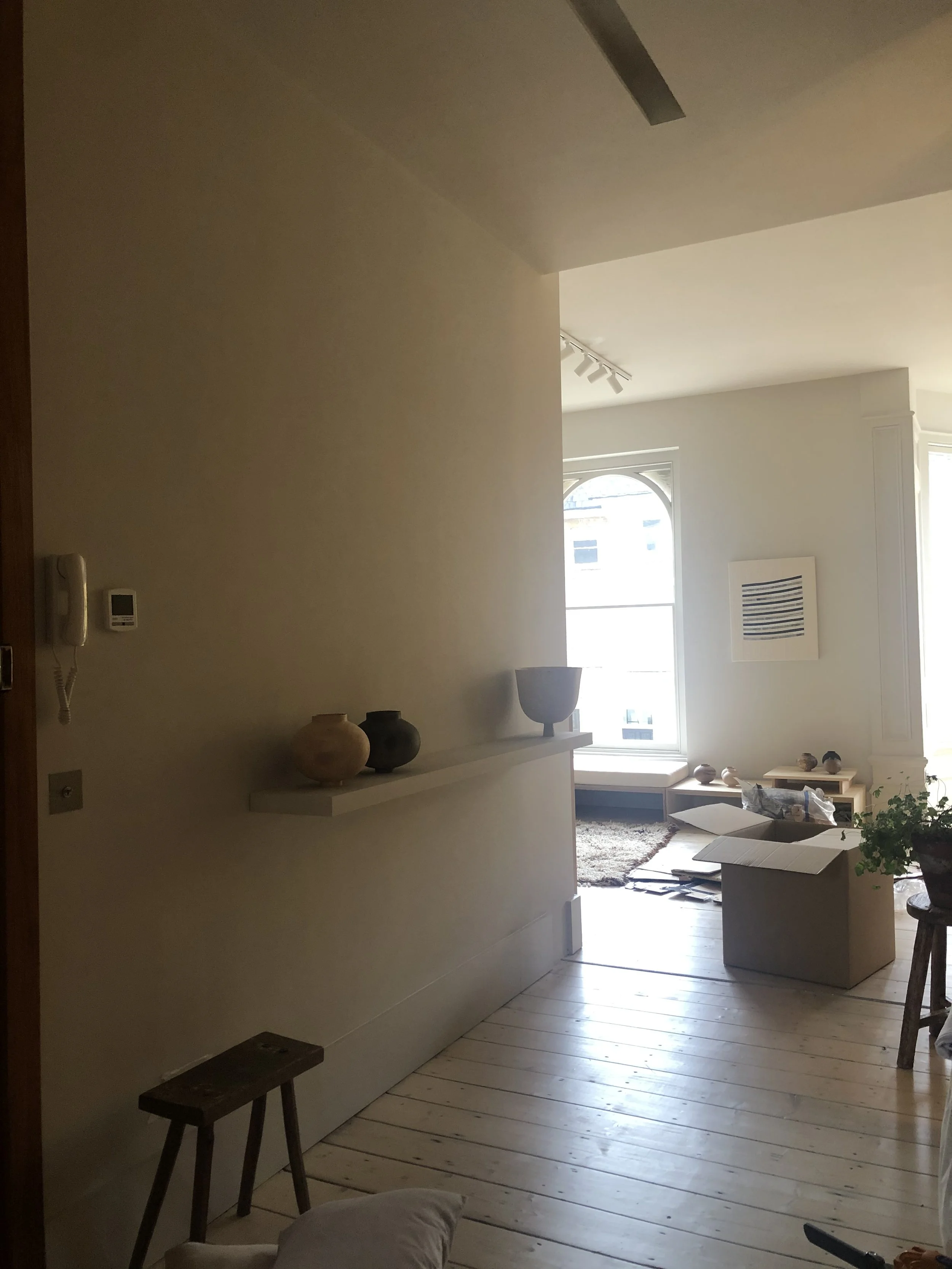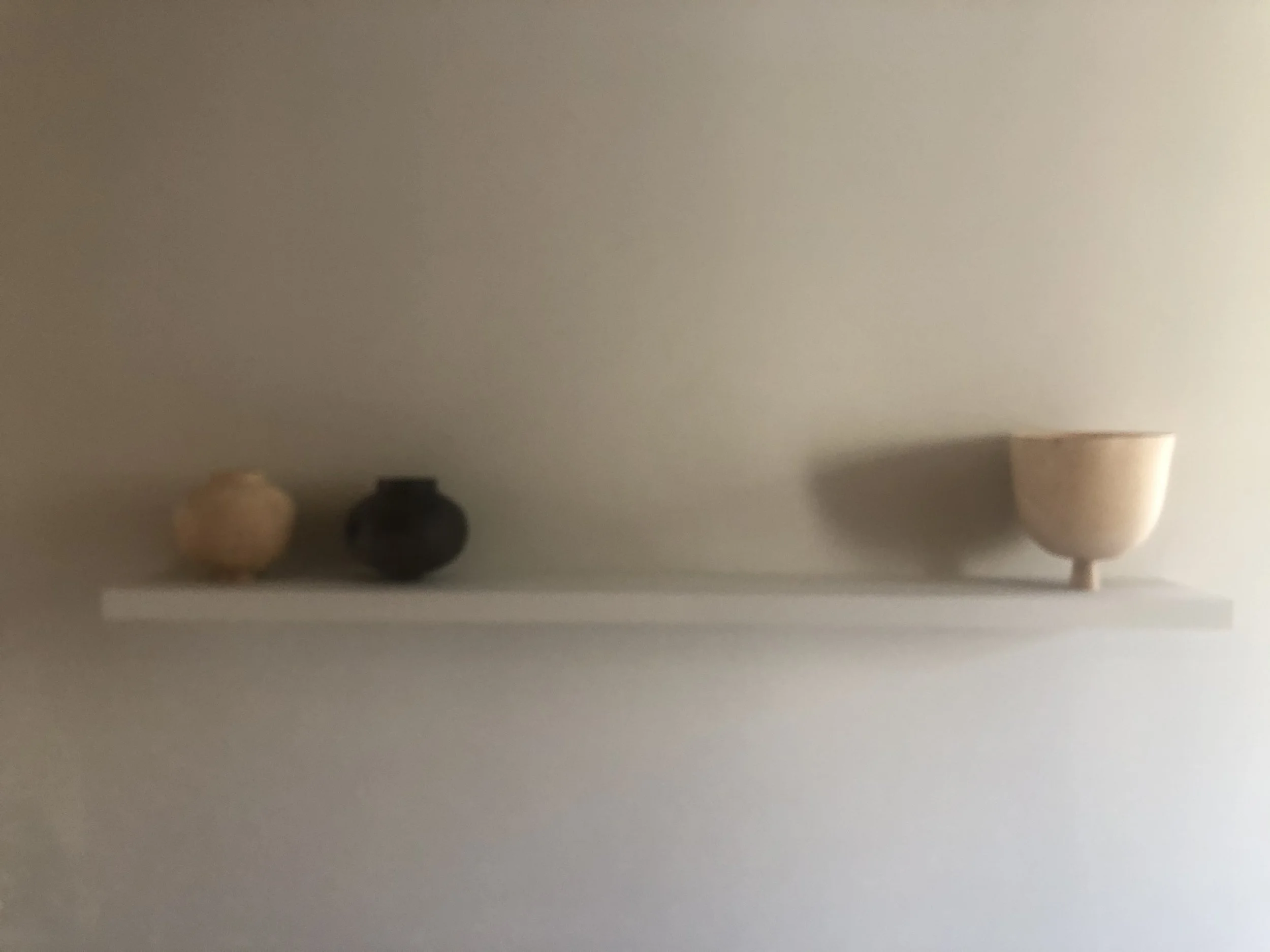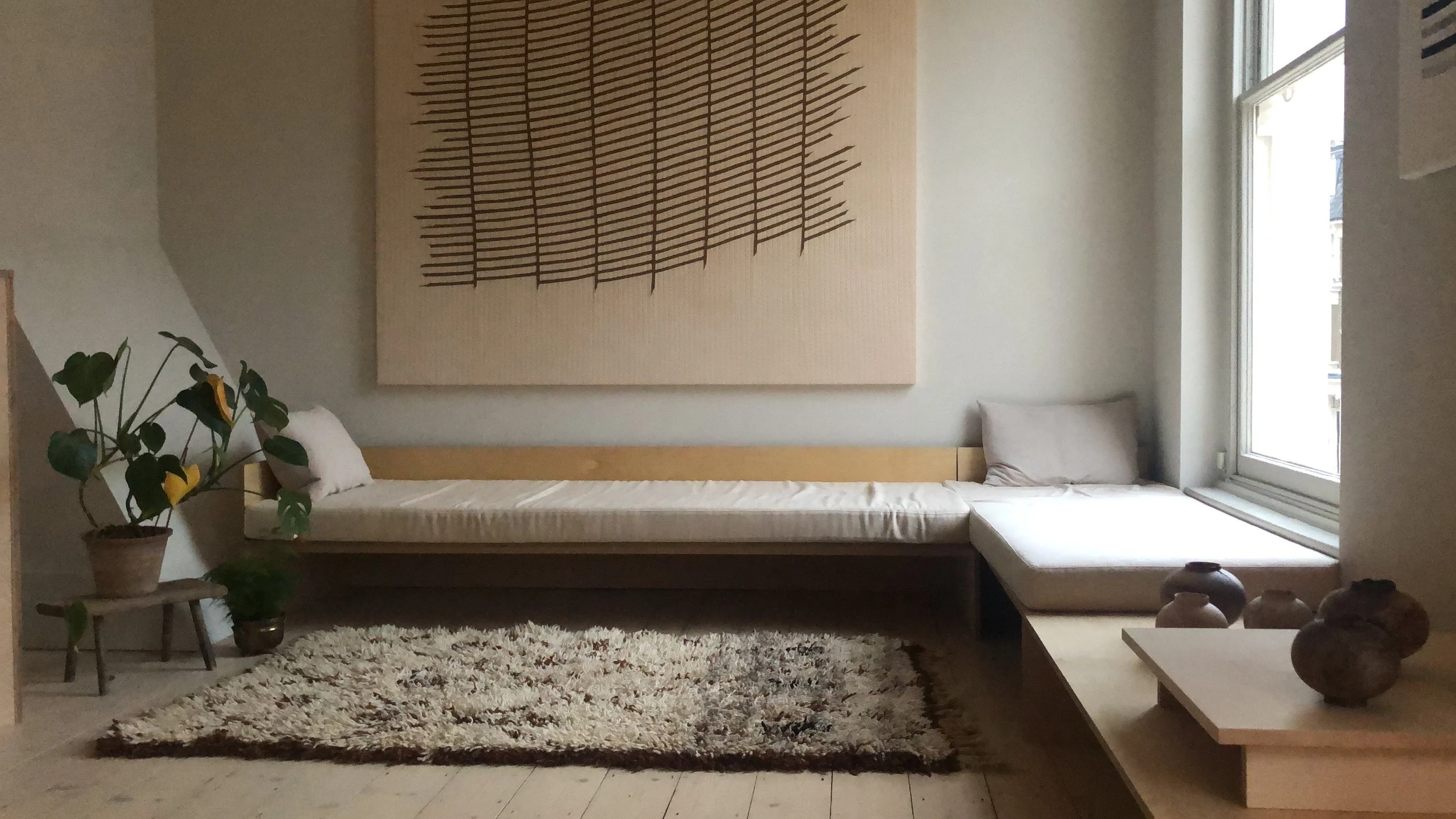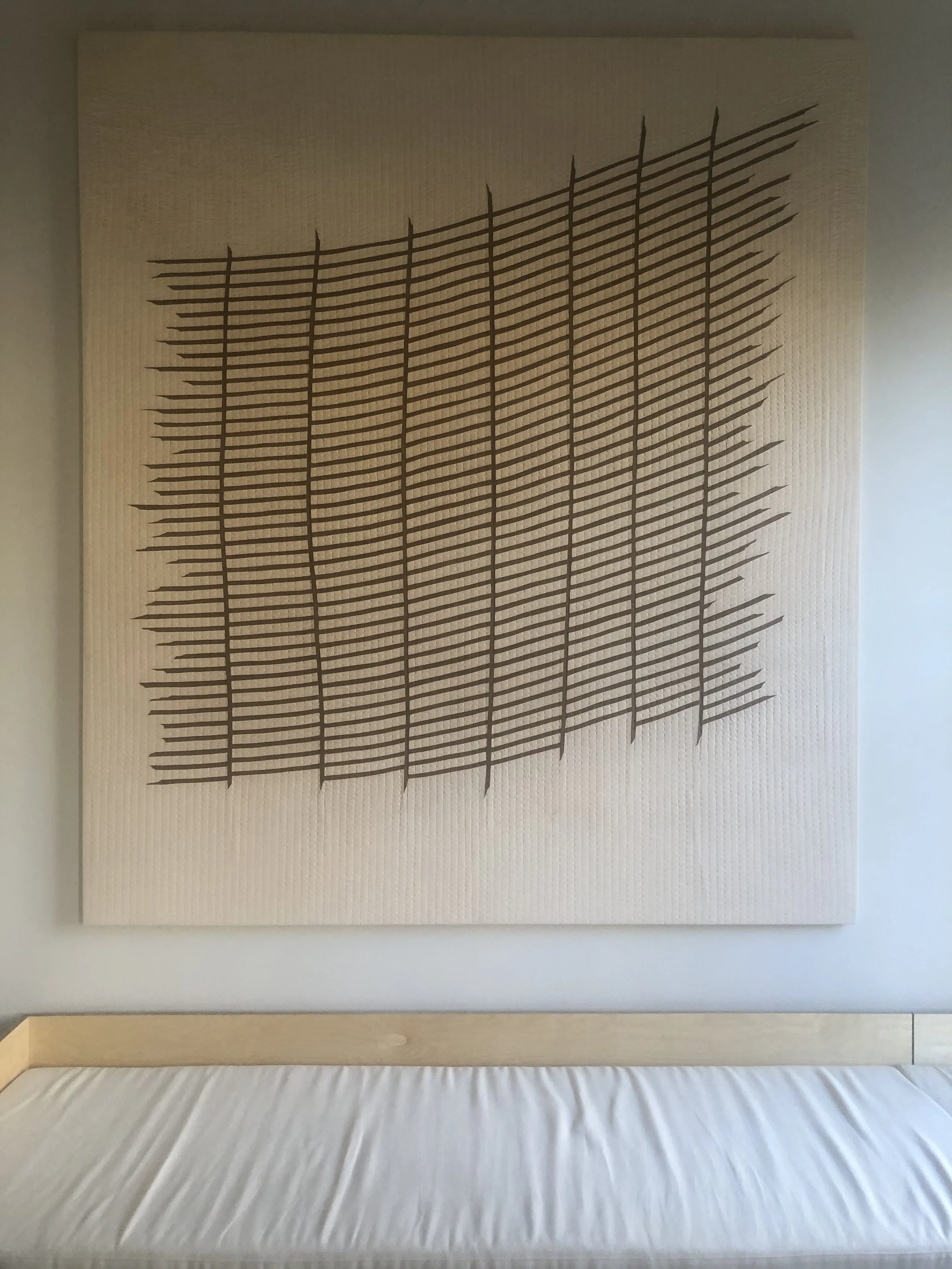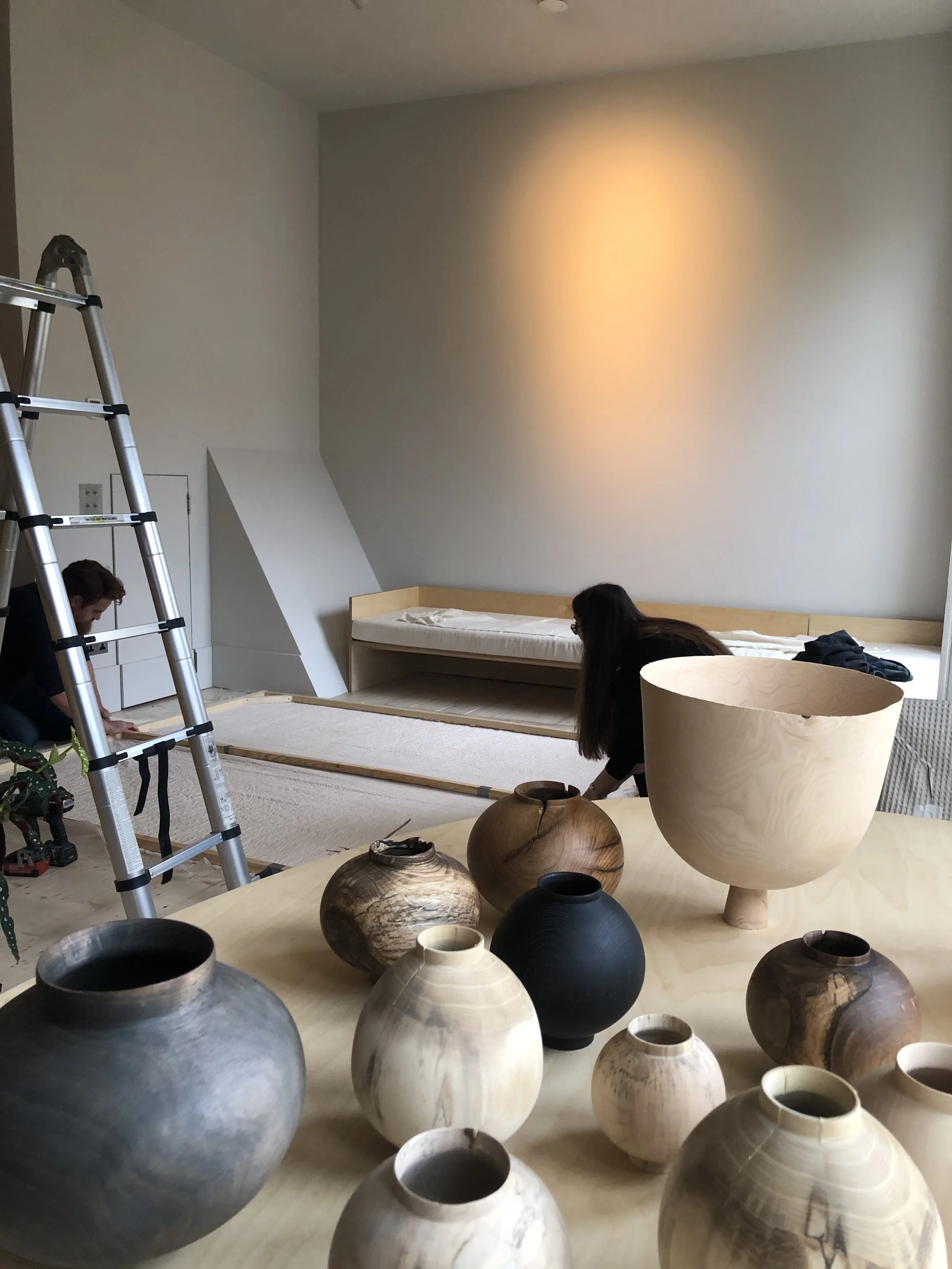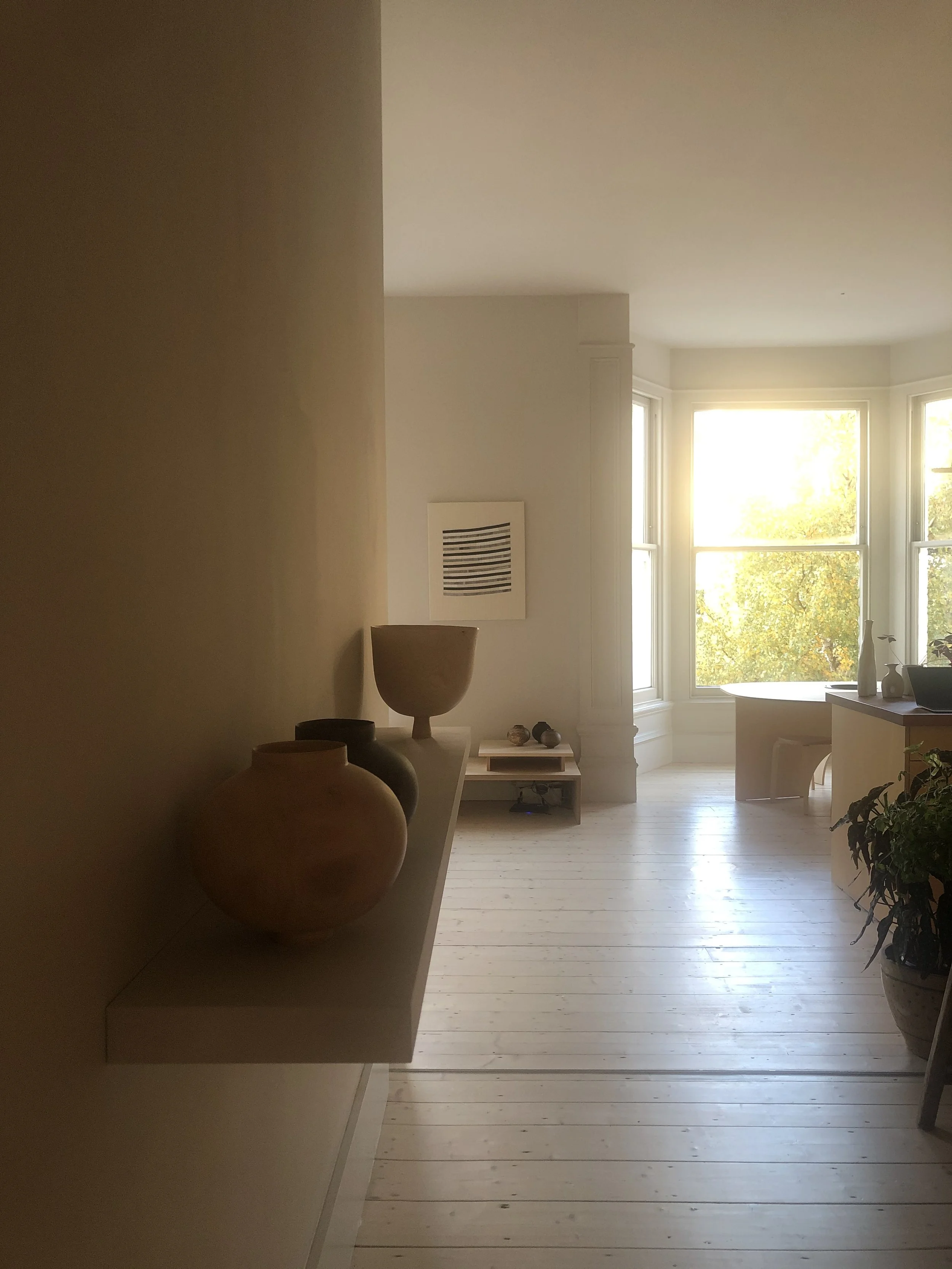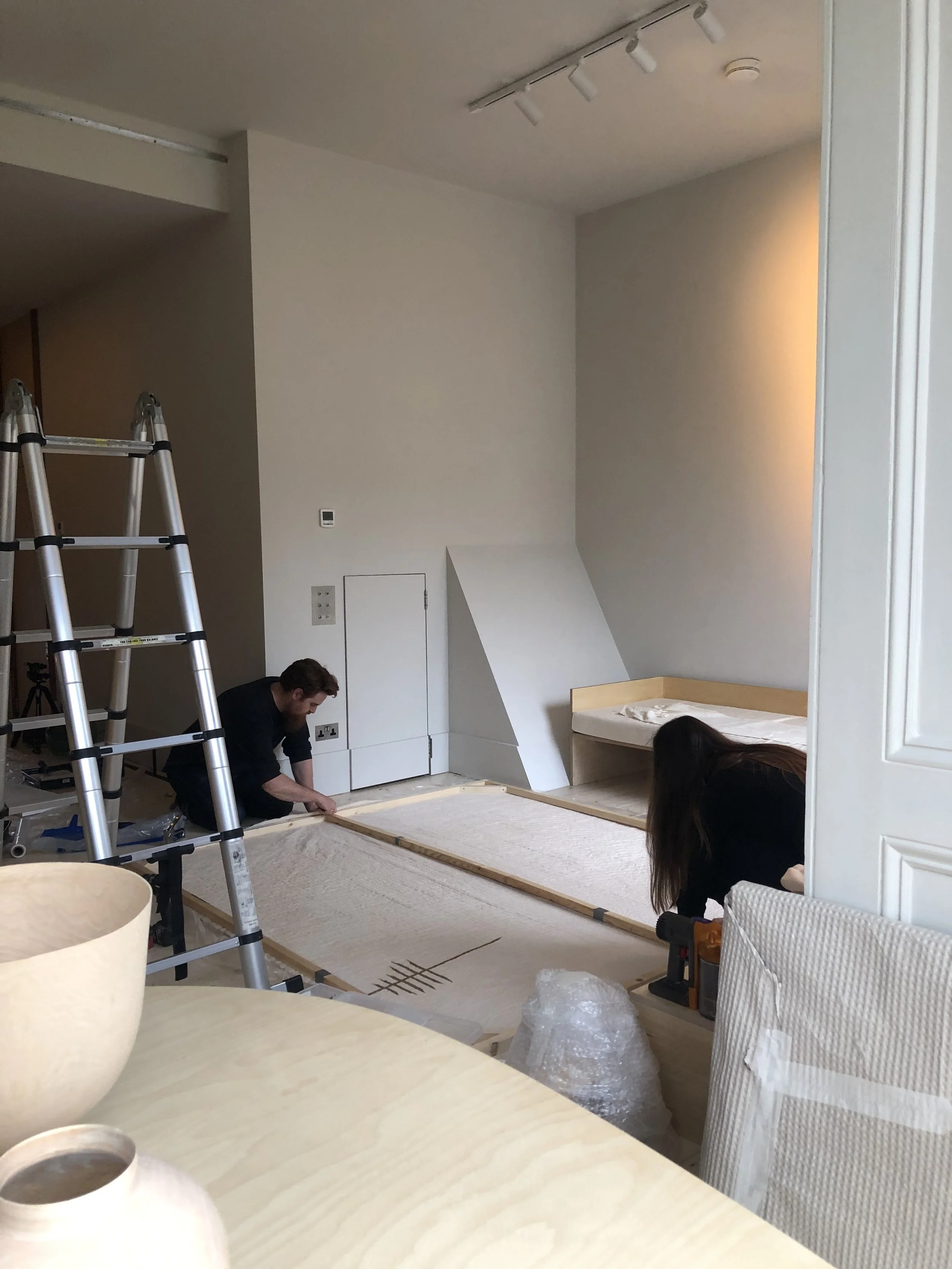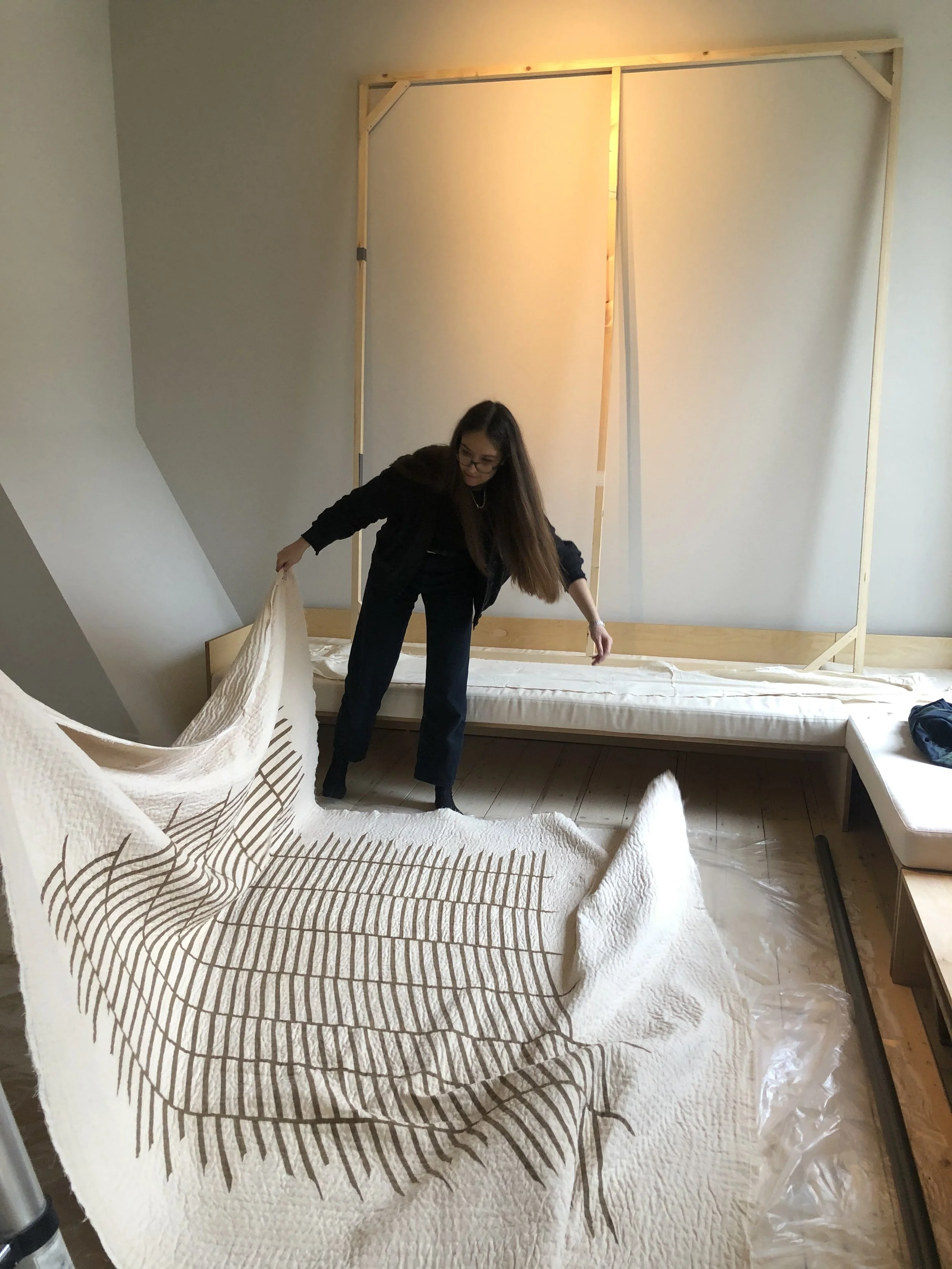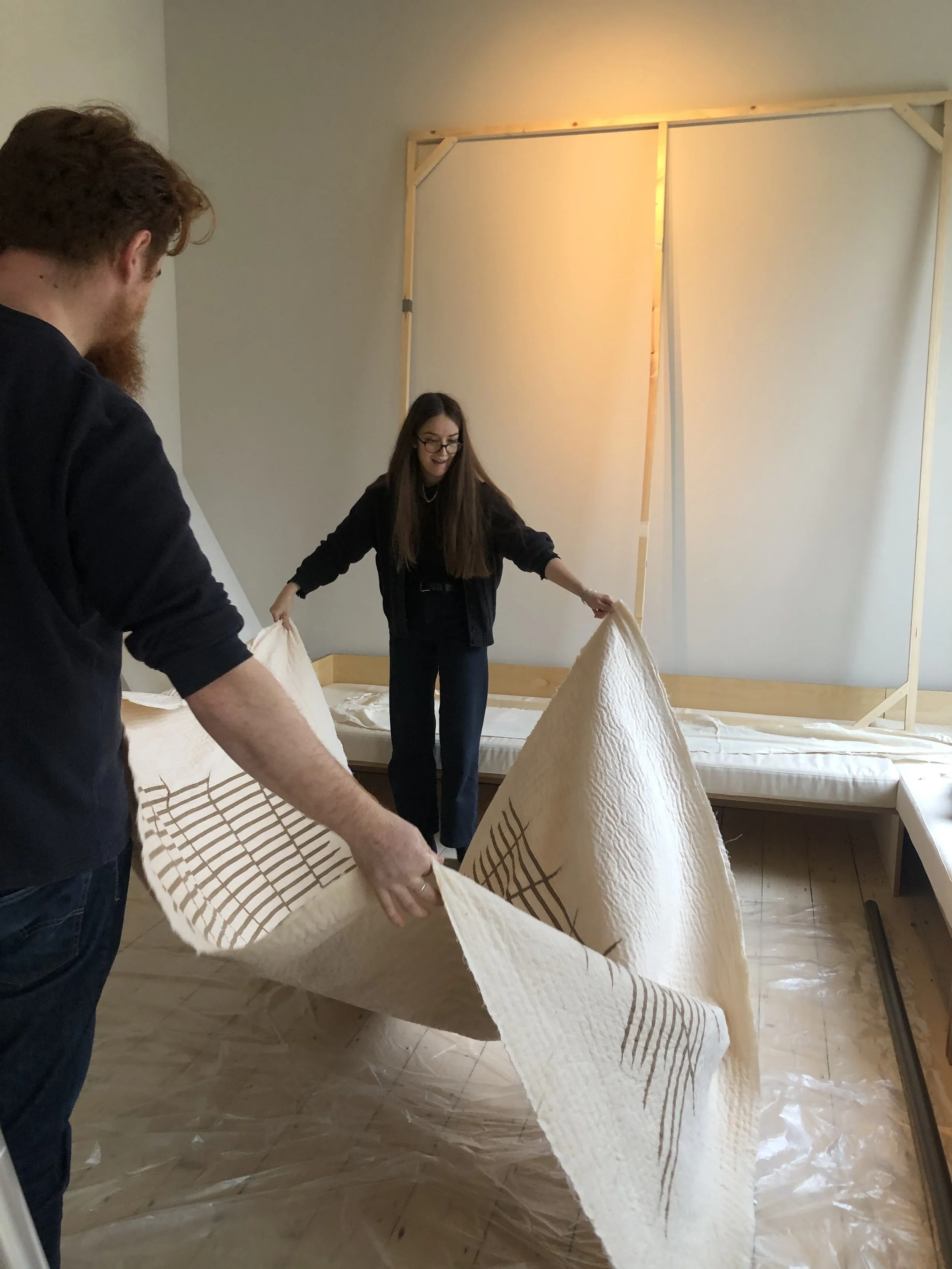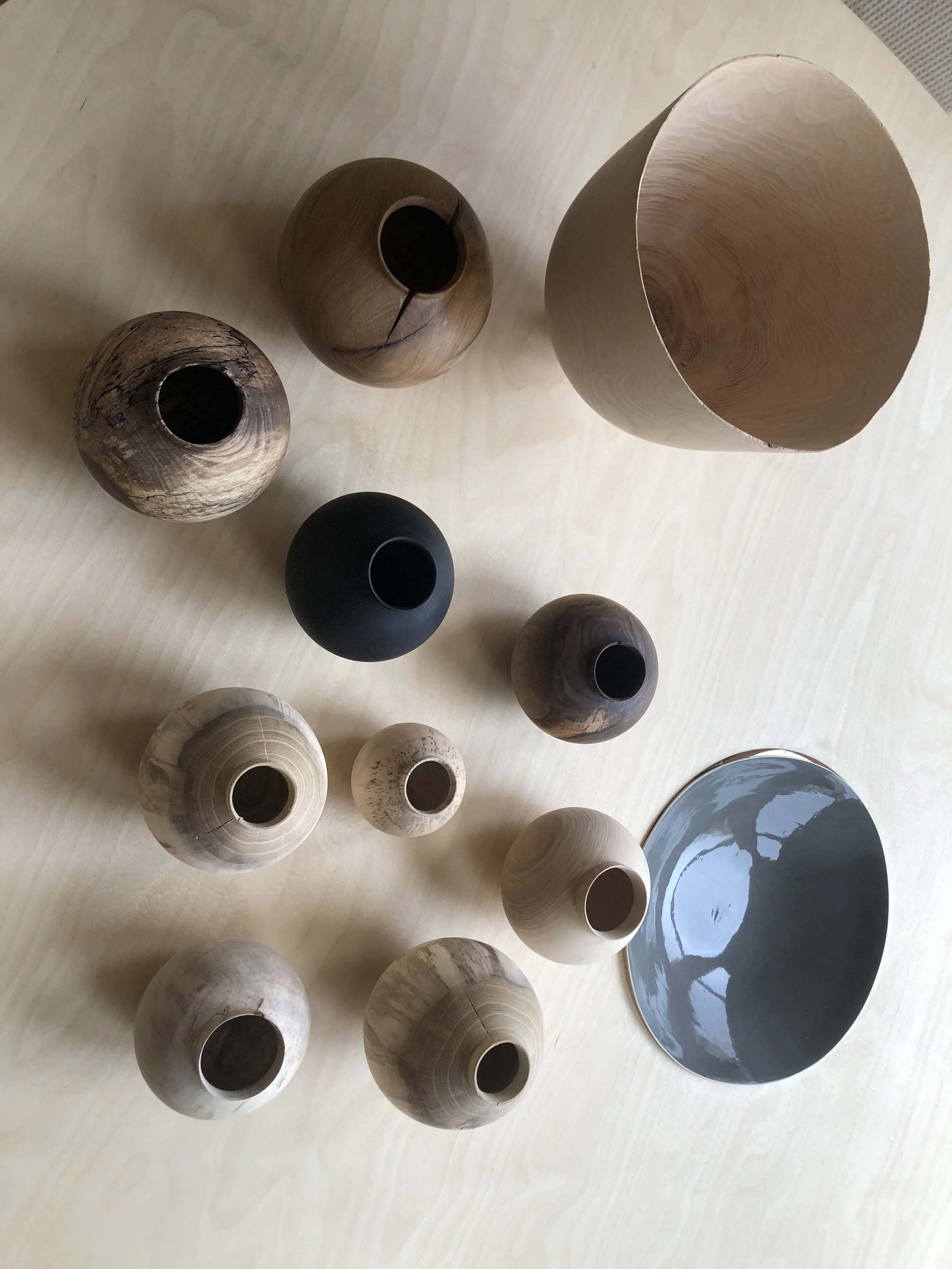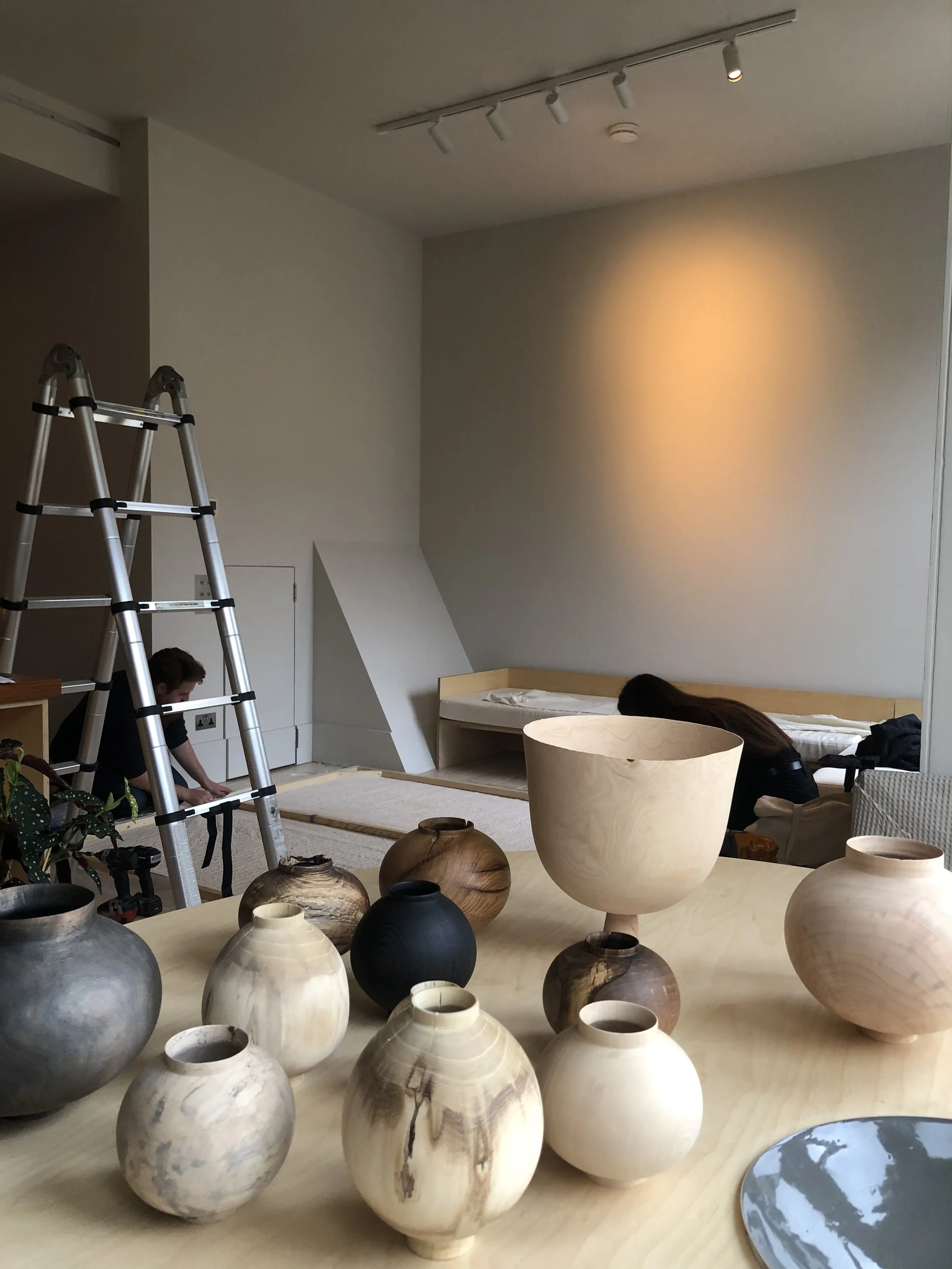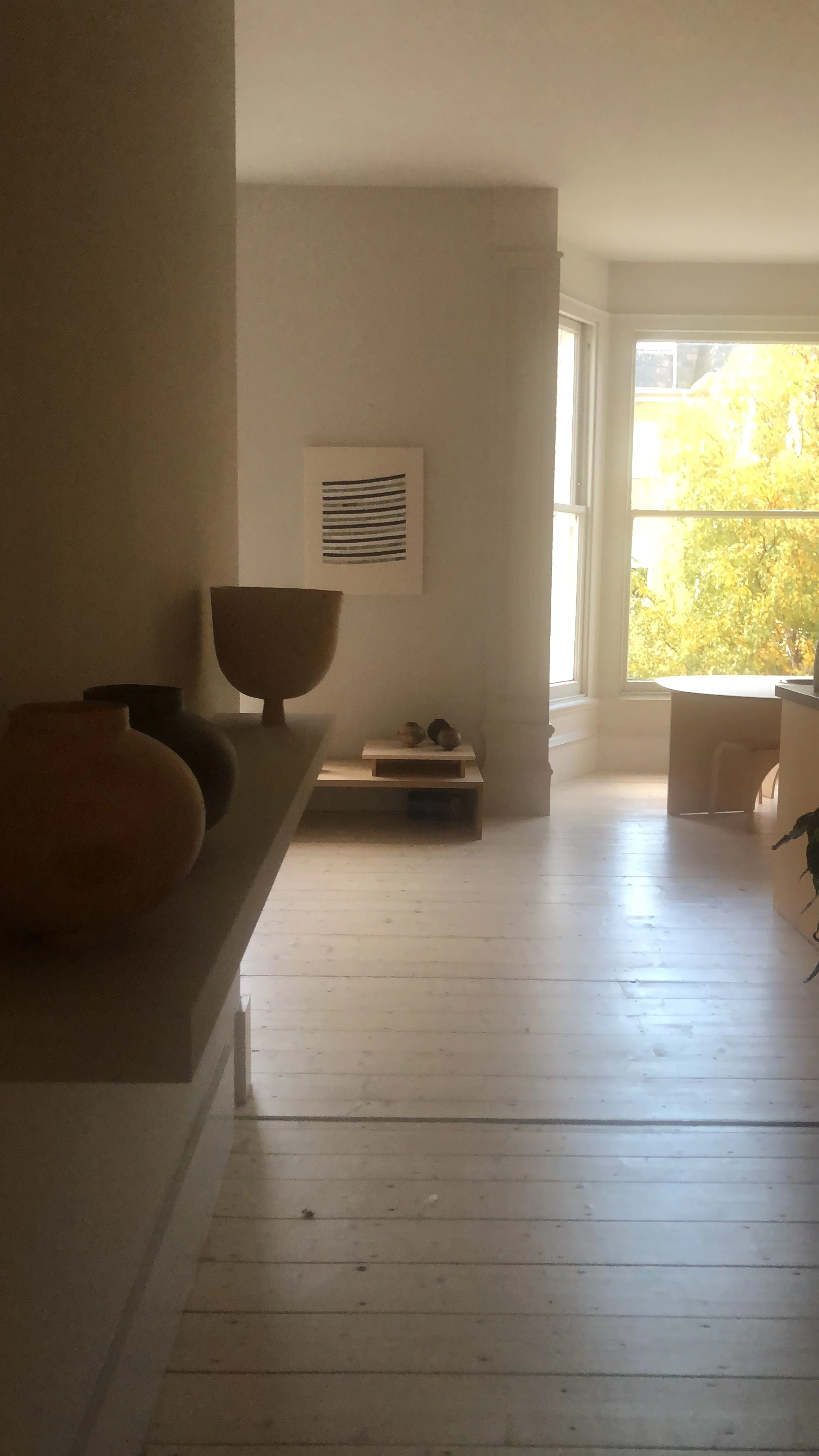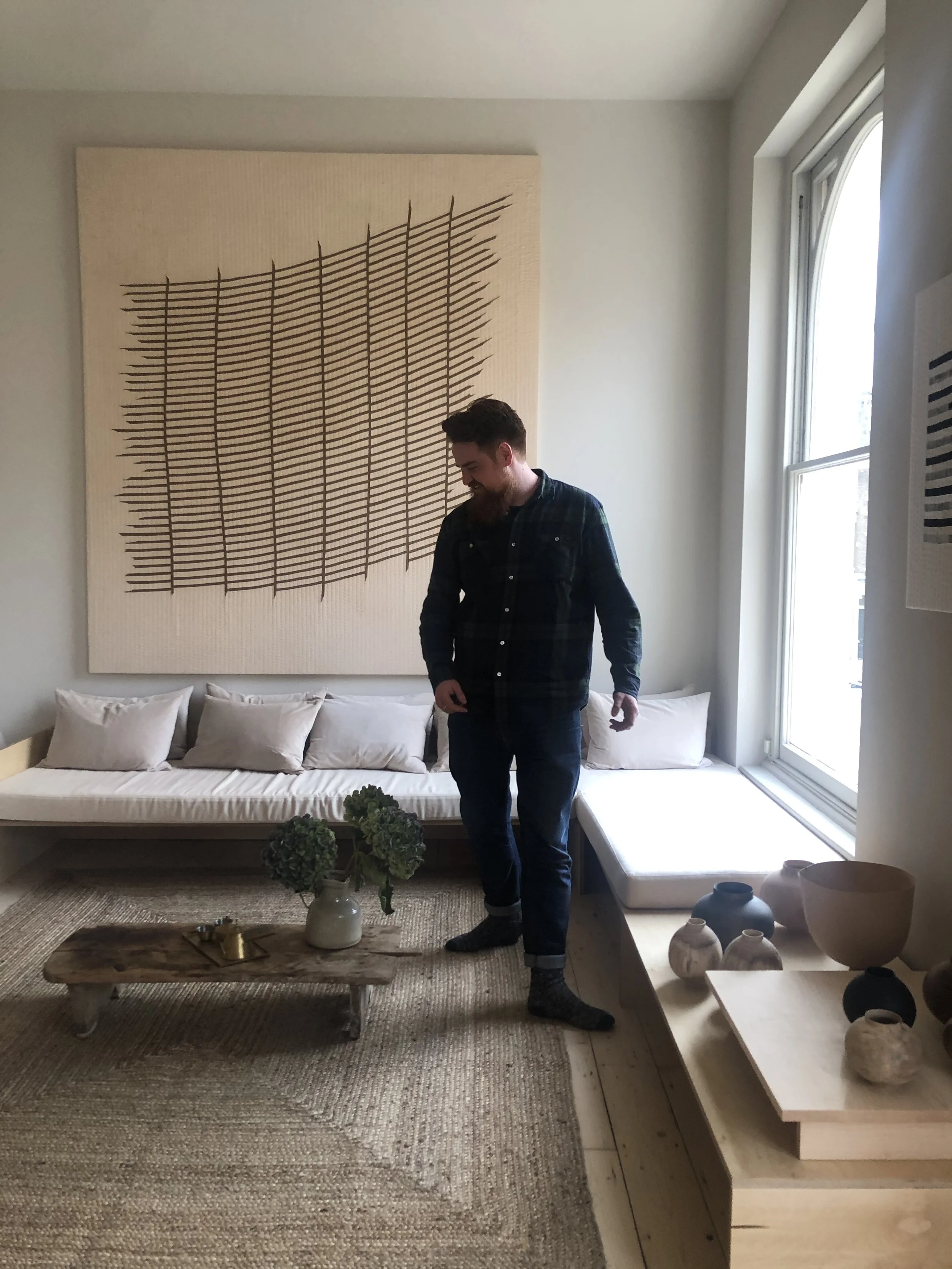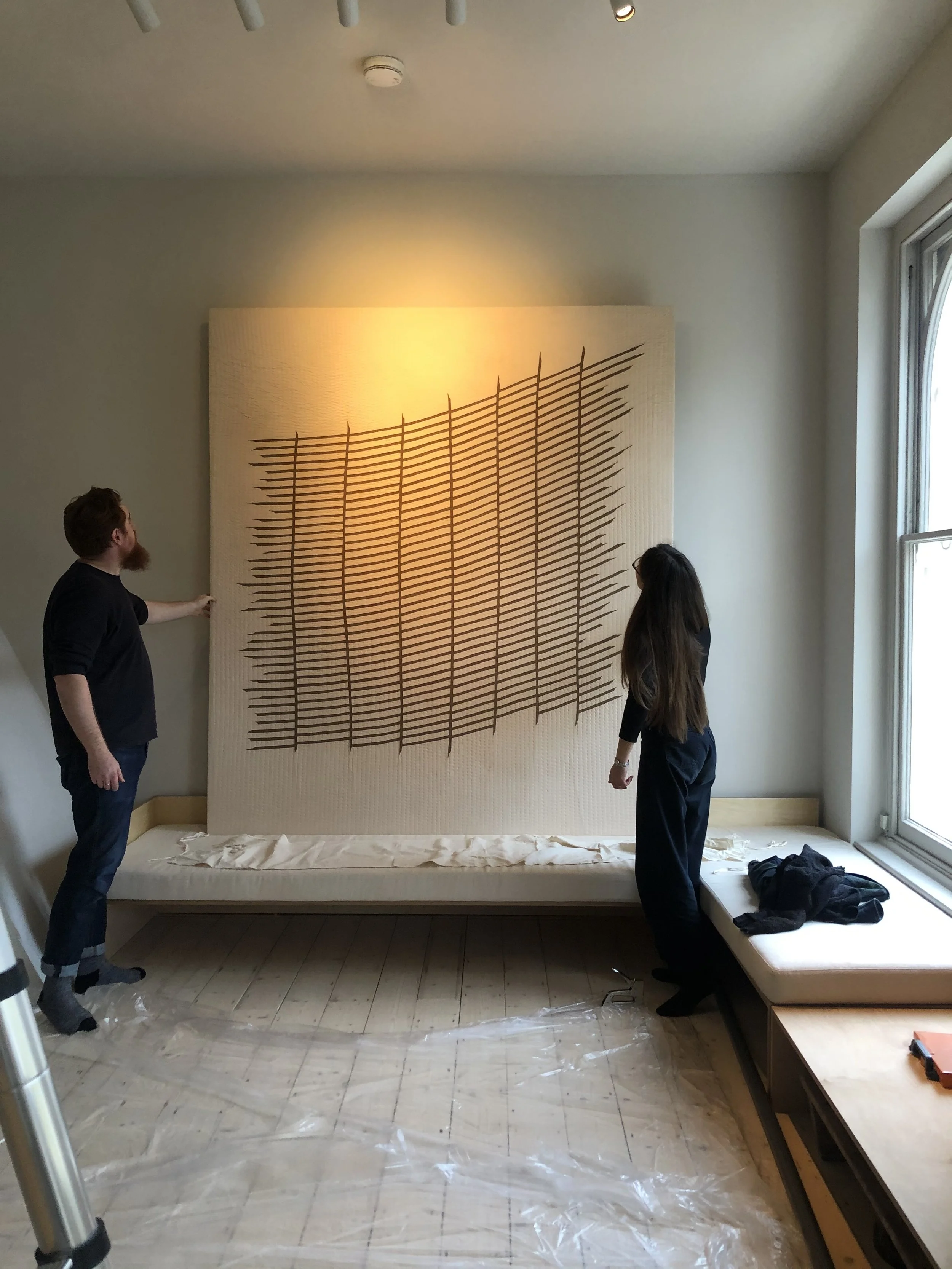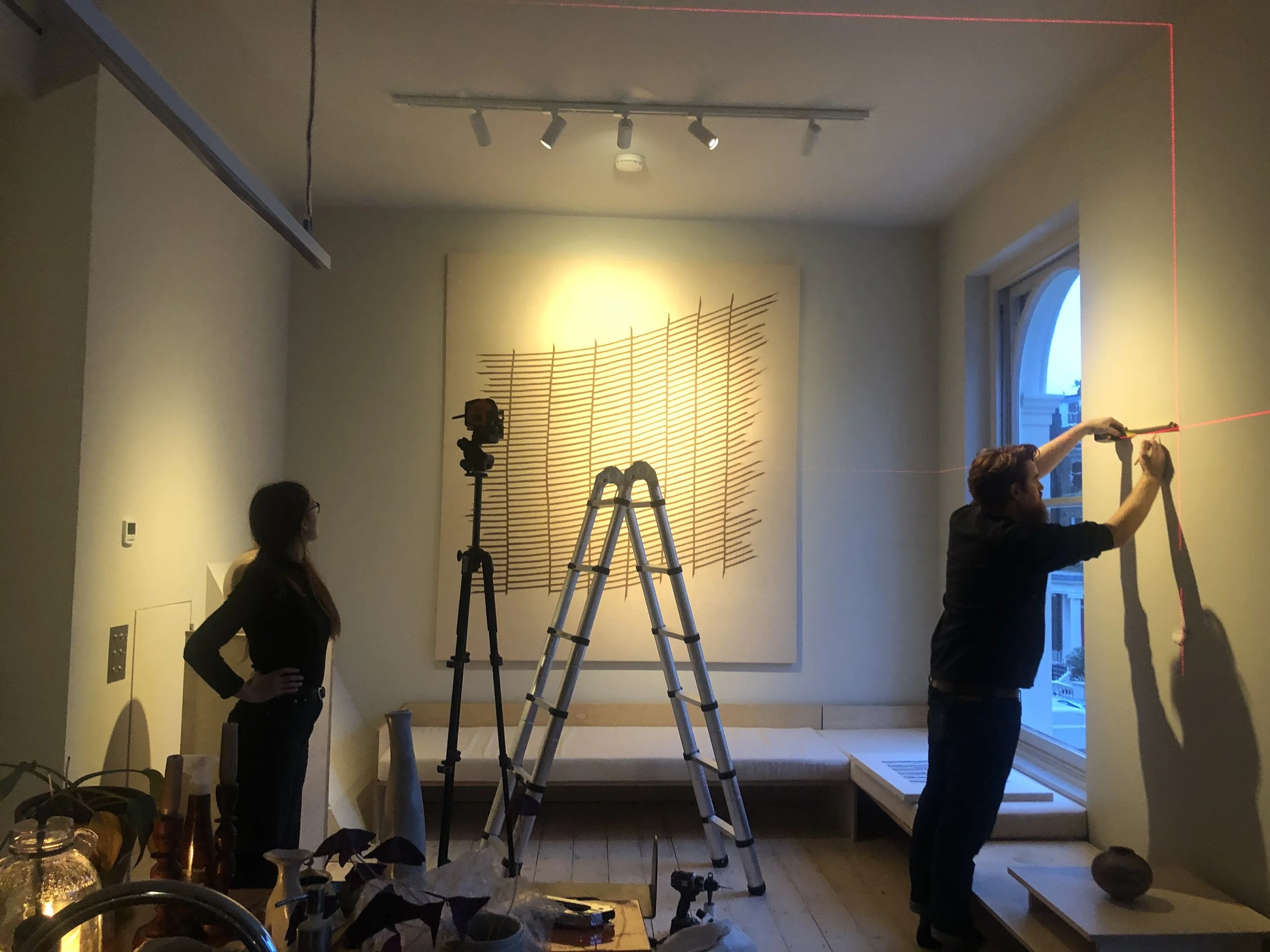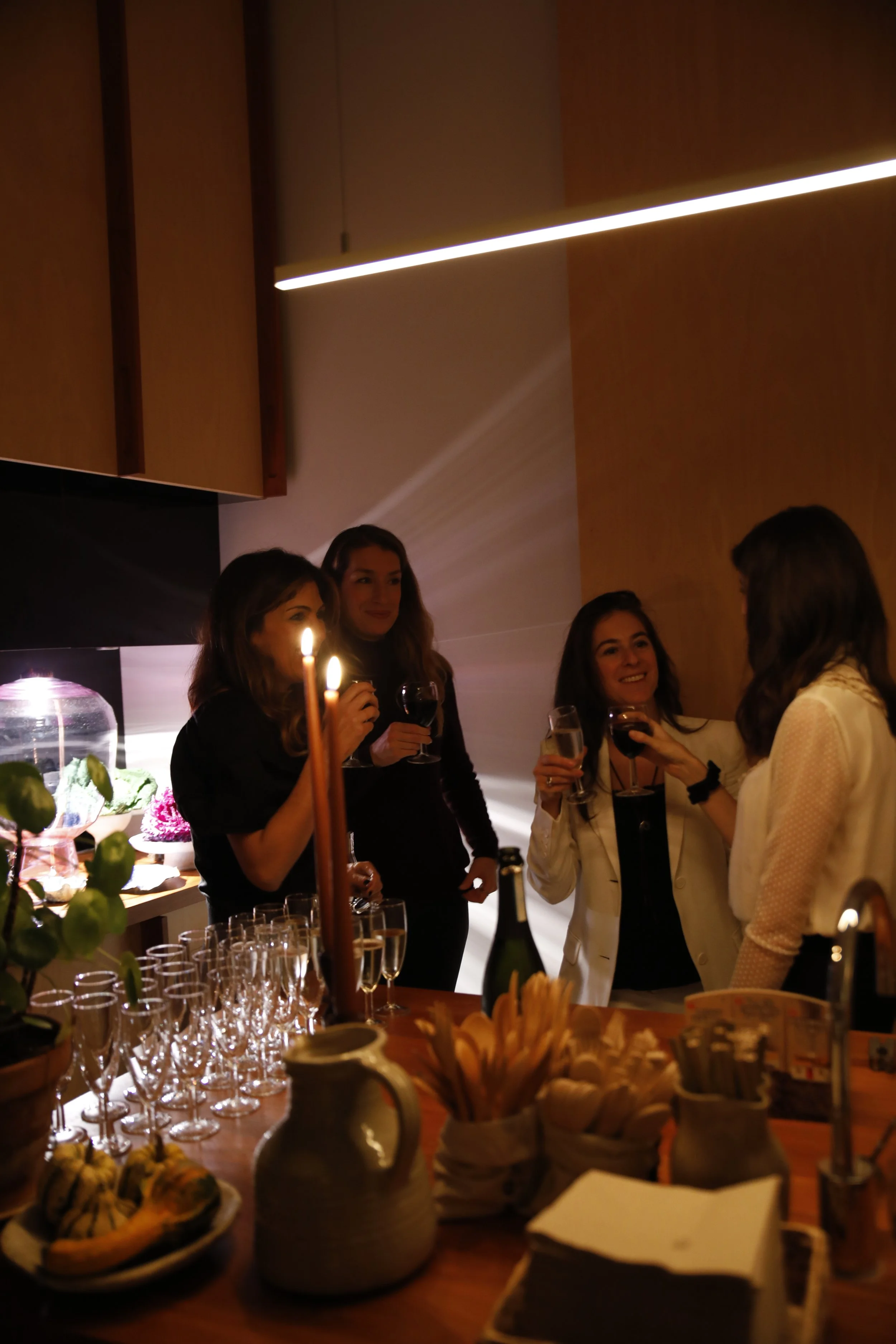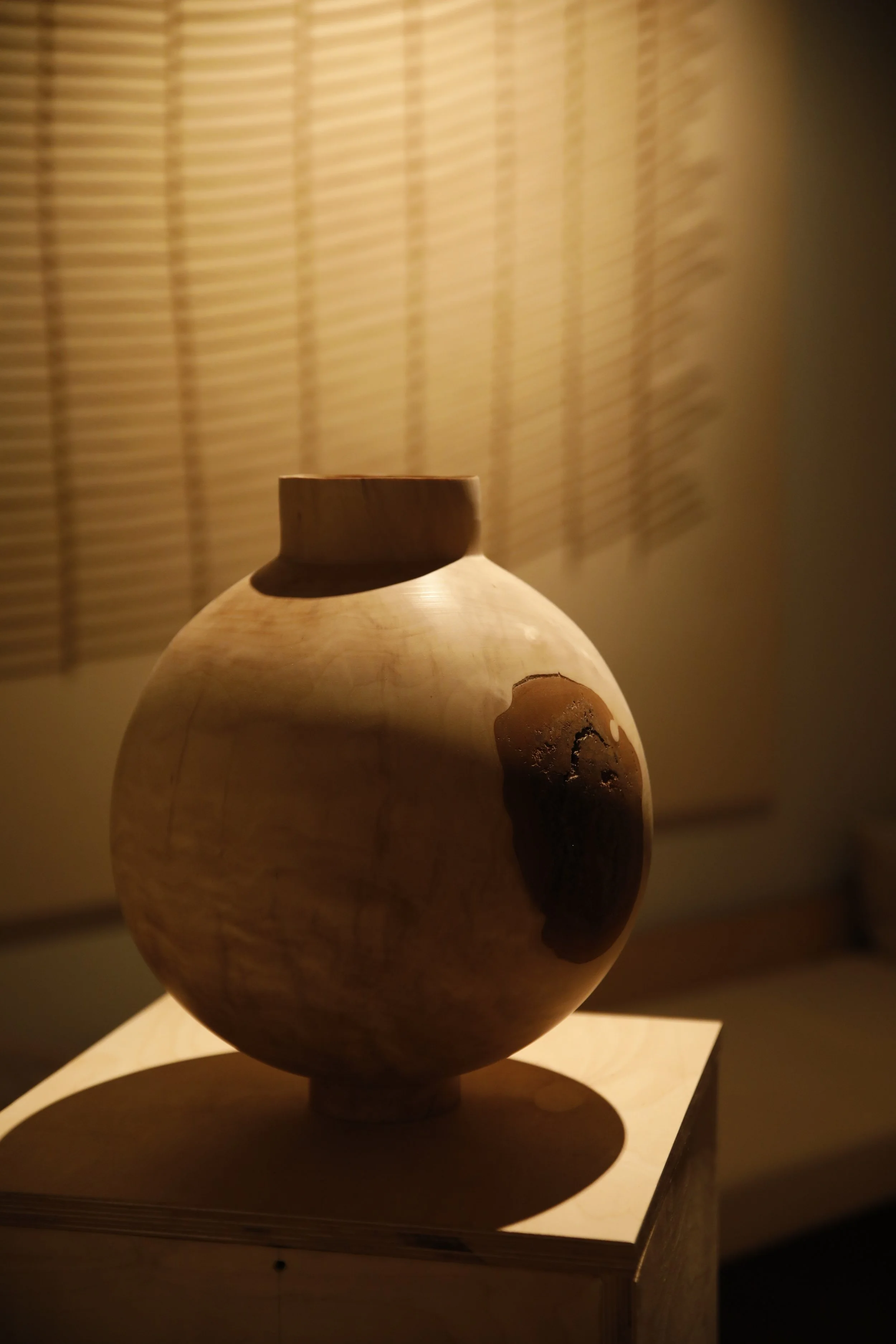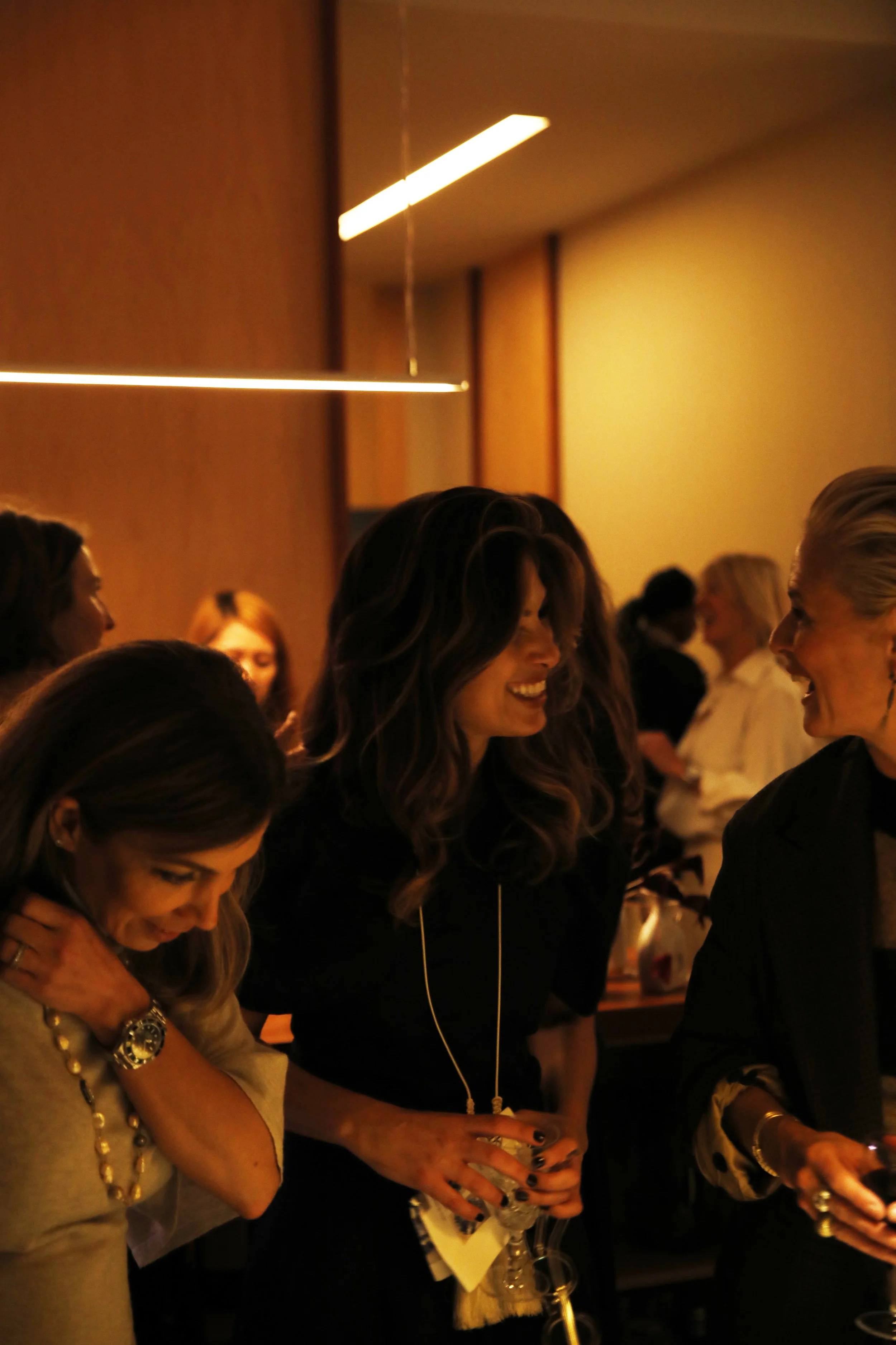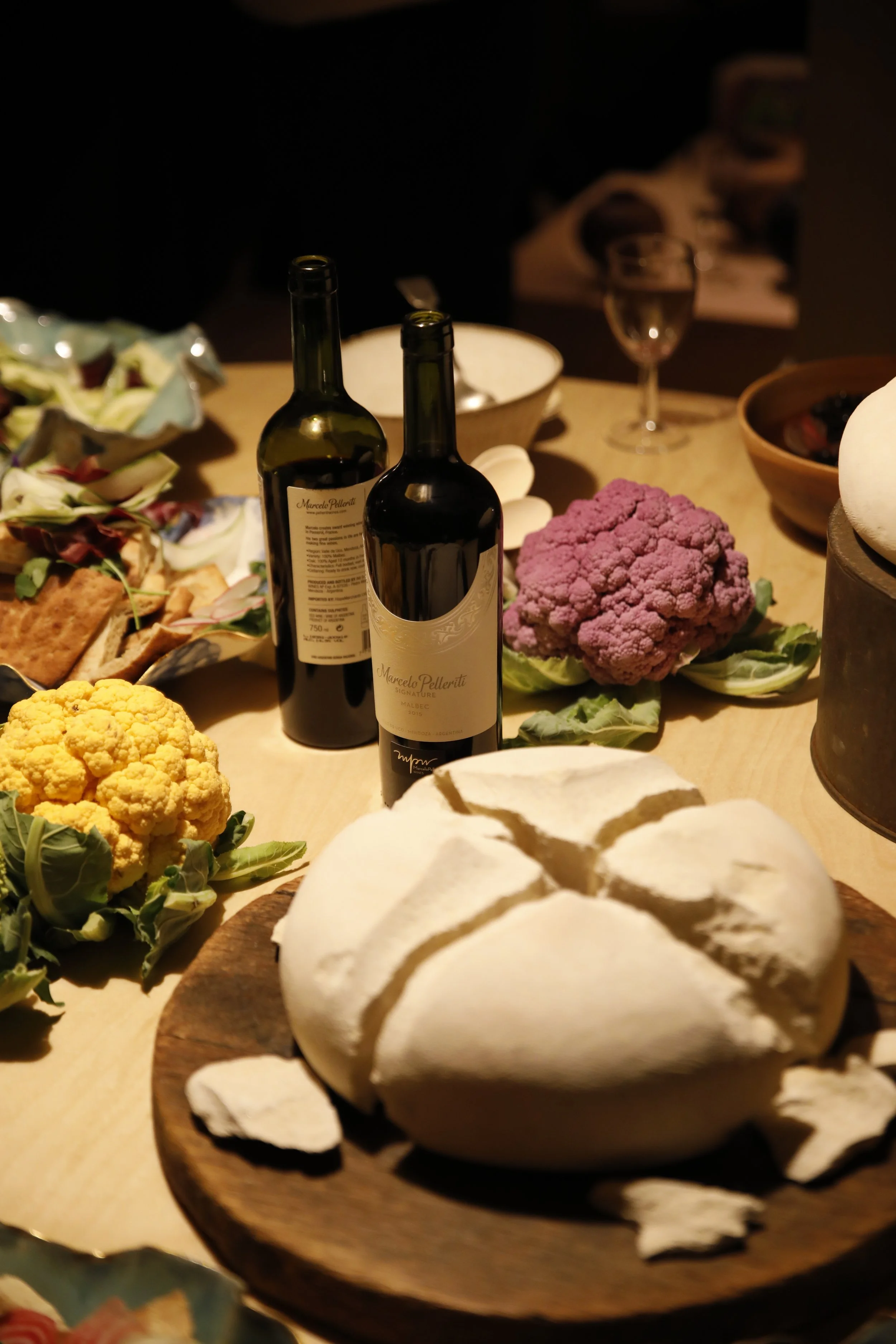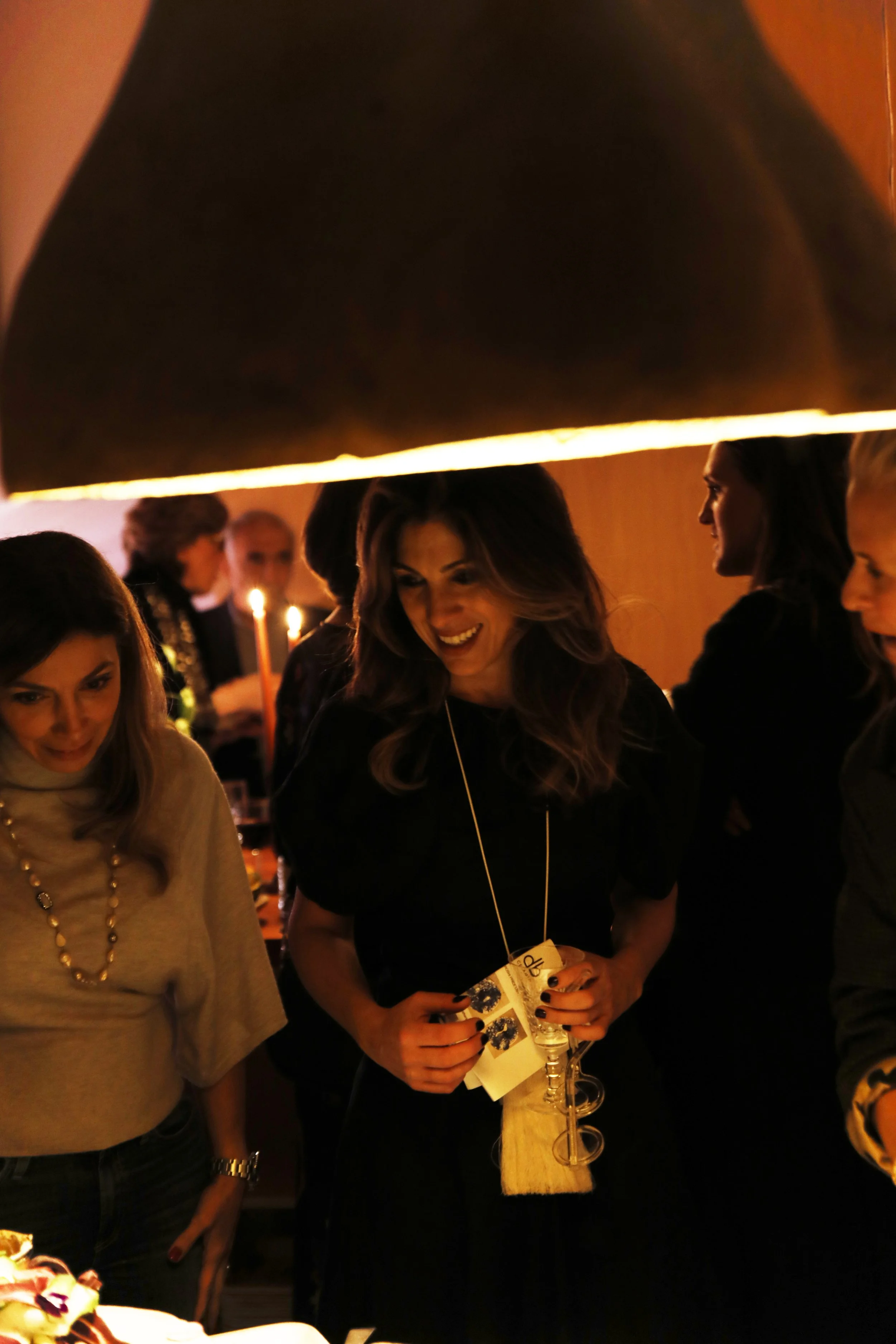Forest + Found: Material Memory and the Language of Nature – A Thanksgiving at Roshi Gallery
Choosing Forest + Found as the first artists for the opening of my home gallery wasn’t just a curatorial decision—it was deeply symbolic. When I envisioned transforming my home in Little Venice into a gallery, I wanted it to be a place where art didn’t feel distant or untouchable but instead integrated into life, where the works themselves had a soul and a story that would resonate with every visitor. Abigail Booth and Max Bainbridge epitomized this vision.
Their practice is rooted in an ethos that mirrors my own values: a connection to nature, an appreciation for craftsmanship, and an ability to bridge the gap between contemporary art and ancient traditions. Abigail and Max don’t just create objects; they bring nature to life in a way that is tactile and deeply meditative. Their works embody the forest—not only as a physical source of inspiration but as a metaphor for grounding, transformation, and renewal. It felt fitting to debut my gallery with artists who could transform my home into something more: a space alive with meaning and creativity.
I first encountered their work in their studio after a memorable walk in Epping Forest. Being in the forest with them felt like stepping into the source of their magic. Abigail would pick up leaves and talk about their textures and colors, while Max focused on the forms of fallen branches, seeing potential in each twist and imperfection. It wasn’t just the materials they cared about—it was the life behind them, the cycles of growth and decay, and how those processes could be honored in their art. When we reached their studio, it felt like an extension of the forest itself. Abigail’s naturally dyed textiles hung in muted, earthy tones, while Max’s wooden vessels, shaped and scarred by fire, told their own stories of transformation.
When I invited them to exhibit as the inaugural artists for my home gallery, they embraced the challenge. It was November, and Thanksgiving was approaching—a time for reflection, gratitude, and connection. I wanted this opening to feel more than celebratory; I wanted it to be meaningful, an expression of thanks to the people and stories that have shaped my life and my vision for the gallery.
The night of the opening was electric. My home, transformed into a gallery space, was filled with 70 guests—friends, collectors, designers, and art enthusiasts—all eager to see what this new space would bring. Abigail and Max’s works became the centerpiece, drawing people into quiet conversations and moments of awe. Abigail’s textile pieces hung like soft, meditative tapestries, their natural pigments echoing the colors of the season. Max’s vessels, raw and monumental, anchored the space with their grounding presence. Together, their works didn’t just decorate the gallery; they activated it.
The artists themselves were there, sharing their story. Guests listened intently as Abigail described the slow process of stitching, the way her hands move over the fabric, connecting her to the earth. Max spoke of the trees he works with, how he carves away at their forms while respecting their natural integrity. Their honesty and humility resonated with everyone in the room.
Hosting 70 people in my home was an ambitious endeavor, but it was worth it. The warmth of the space, the intimacy of the setting, and the personal nature of the work created an atmosphere that no traditional gallery could replicate. Guests lingered for hours, not just to admire the art but to engage with it. Conversations flowed, wine was poured, and the boundaries between artist, viewer, and space dissolved.
As the evening drew to a close, I found myself standing in the middle of it all, overwhelmed with gratitude. This was more than an exhibition—it was a celebration of connection: connection to nature, to creativity, to community. Abigail and Max had given me a gift by trusting me with their work, and I felt privileged to share it with others.
Looking back, I realize that this opening wasn’t just about launching a gallery. It was about setting the tone for what I wanted this space to become: a home for art that lives and breathes, that invites people to feel and reflect, that bridges the gap between the everyday and the extraordinary. Abigail and Max’s work did exactly that, and for that, I will always remember this first exhibition as the true beginning of something deeply meaningful.

